The next place I visited on my journey while exploring cultural monuments in the vicinity of Kragujevac was the village of Donje Grbice, specifically – the Church of St. Elijah. However, to get there, I drove along some side roads and I found the nature in the central Serbian region of Šumadija in early spring, including numerous fields ready for the new season of agricultural crops, very beautiful.
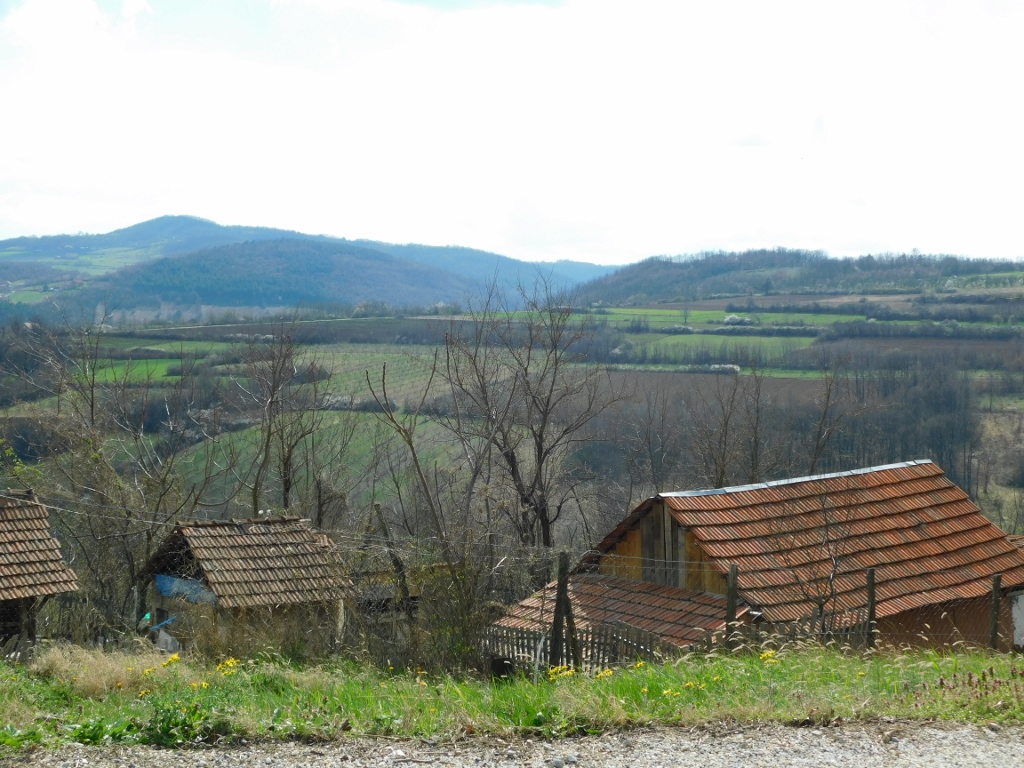 Šumadija in early spring
Šumadija in early spring
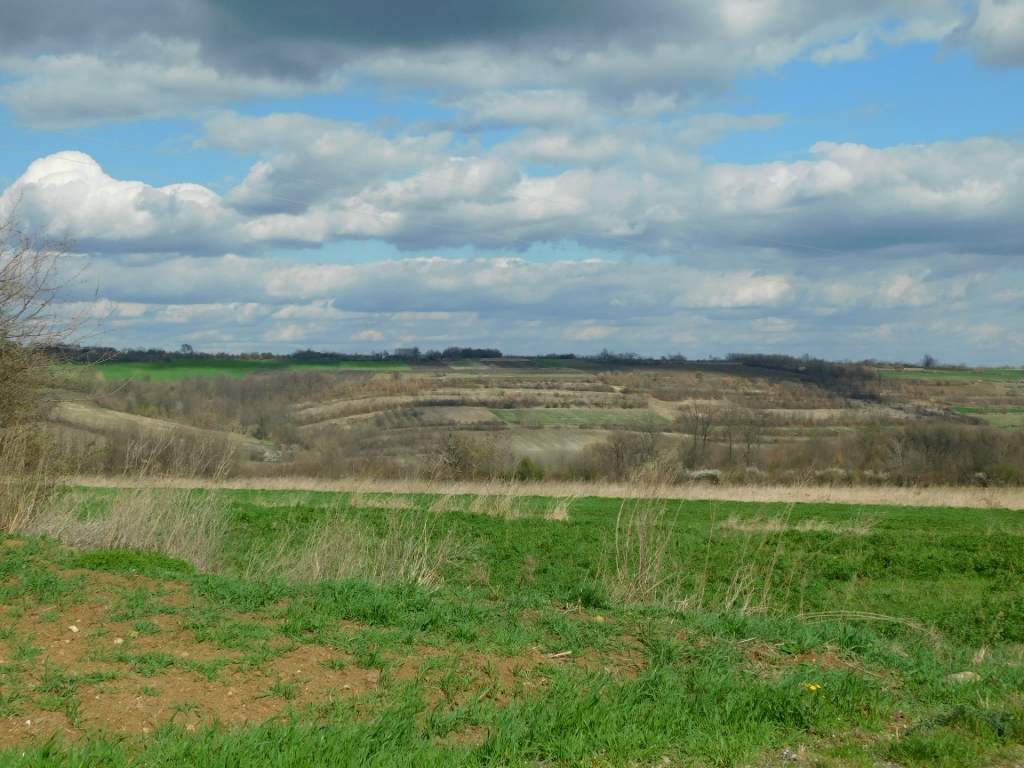 Šumadija in early spring
Šumadija in early spring
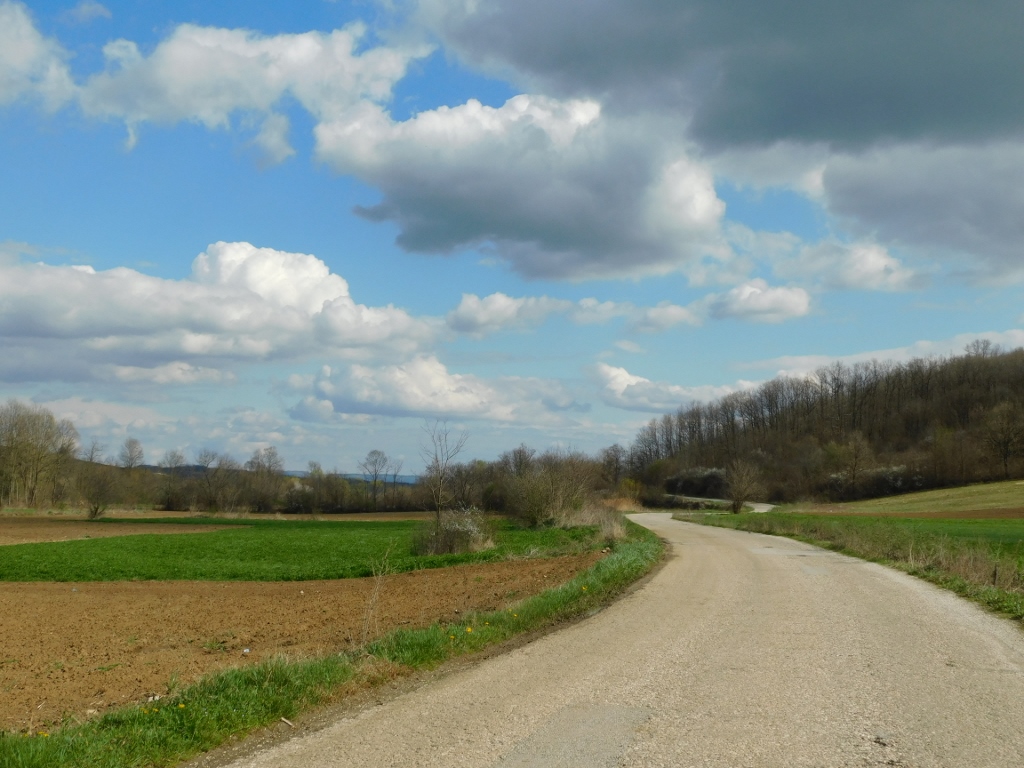 Šumadija in early spring
Šumadija in early spring
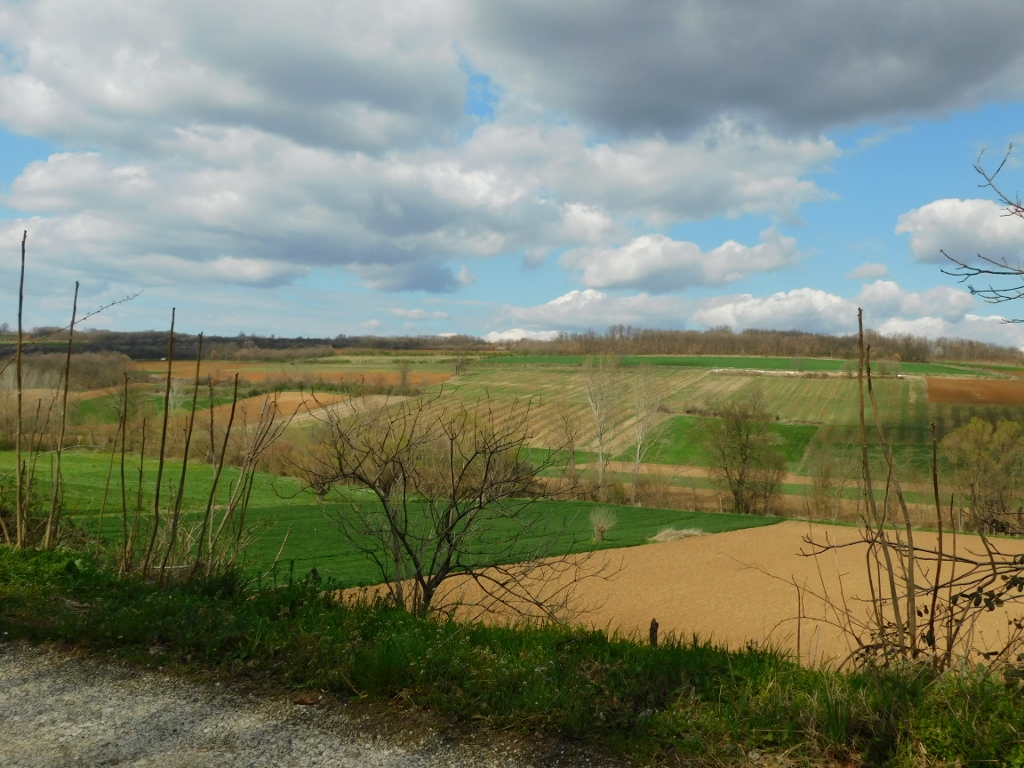 Šumadija in early spring
Šumadija in early spring
The church of St. Elijah is actually located in a valley near the village; I mean, it is a bit isolated from the populated area. It is surrounded by a courtyard and when I entered here, I encountered a priest who was just about to leave on an errand. However, he kindly stayed to chat with me for a bit and offered to be available if I had any more questions after visiting the church.
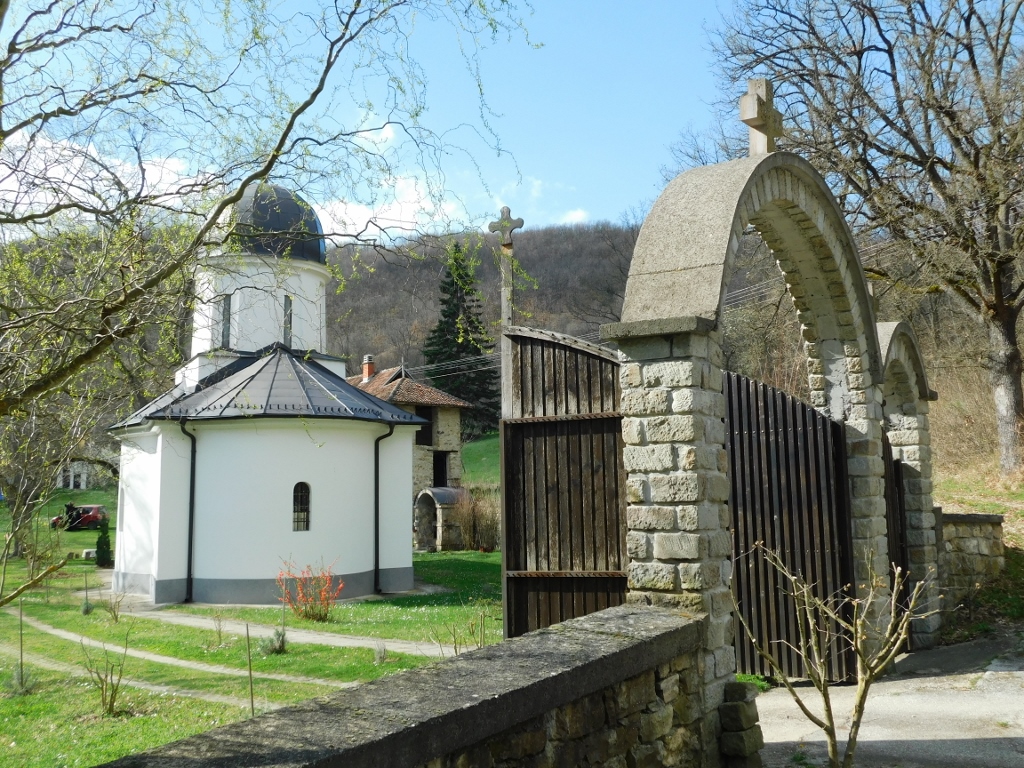 Church of St. Elijah in Donje Grbice
Church of St. Elijah in Donje Grbice
Back in the day, there was a medieval church here, but it gradually decayed, so in 1890, this one was erected, which can still be seen today and represents a cultural monument.
It has a triconch ground plan with an elongated nave, above the central part is a dome placed on a cylindrical drum, while the facade is very simple.
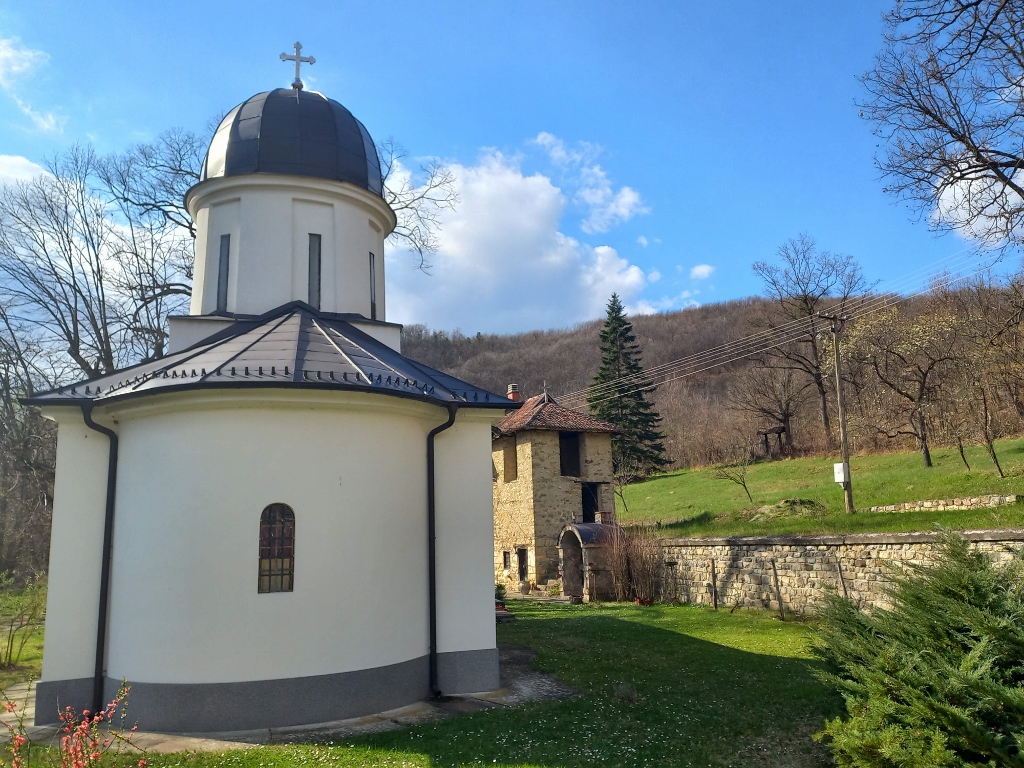 Church of St. Elijah in Donje Grbice
Church of St. Elijah in Donje Grbice
In the churchyard, in close proximity to the entrance of the church, there is also a very beautiful and picturesque stone bell tower erected in 1896.
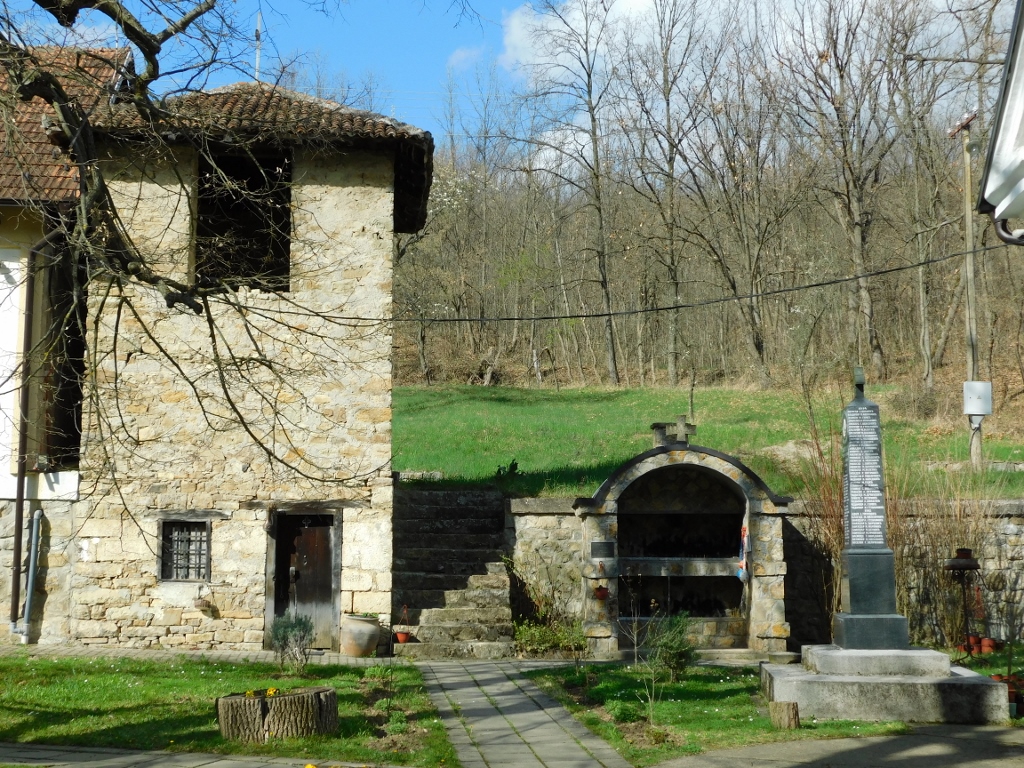 Church of St. Elijah in Donje Grbice, a detail
Church of St. Elijah in Donje Grbice, a detail
The interior of this small church is done without any frescoes, while icons by an unknown author can be seen on the wooden iconostasis.
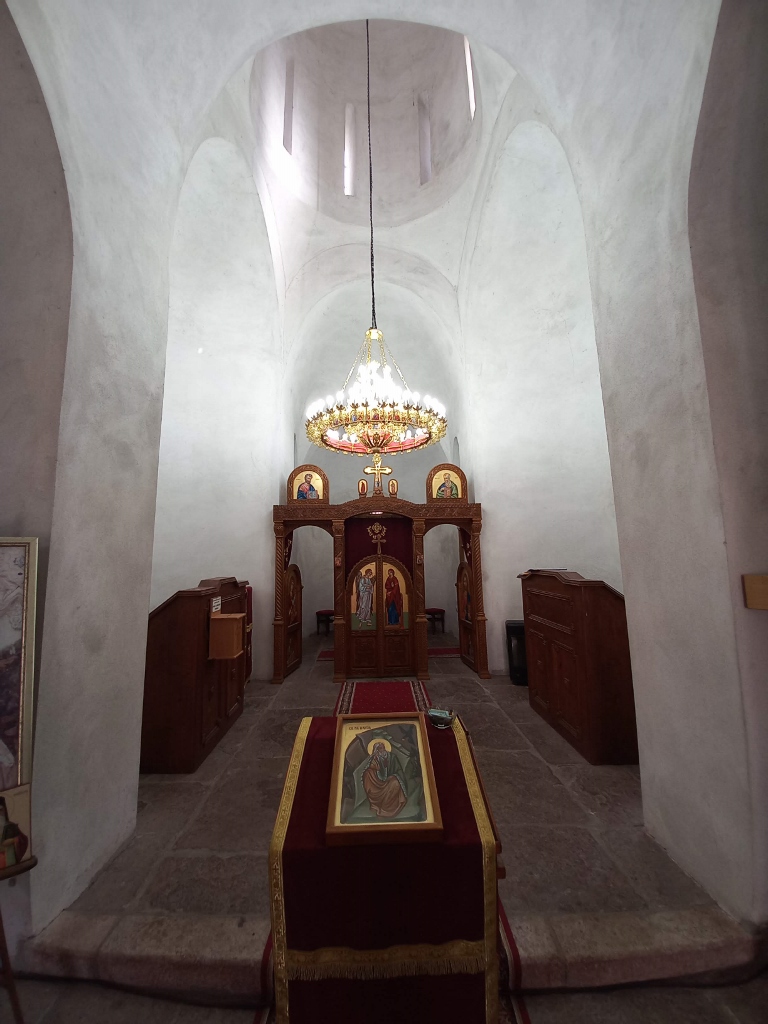 Church of St. Elijah in Donje Grbice, a detail
Church of St. Elijah in Donje Grbice, a detail
After bidding farewell to the priest, I got into the car and once again, driving along the side roads, headed towards the next destination. I must admit, I thoroughly enjoyed driving on roads where hardly anyone else passed except for me, occasionally stopping to capture the beautiful landscapes of Šumadija.
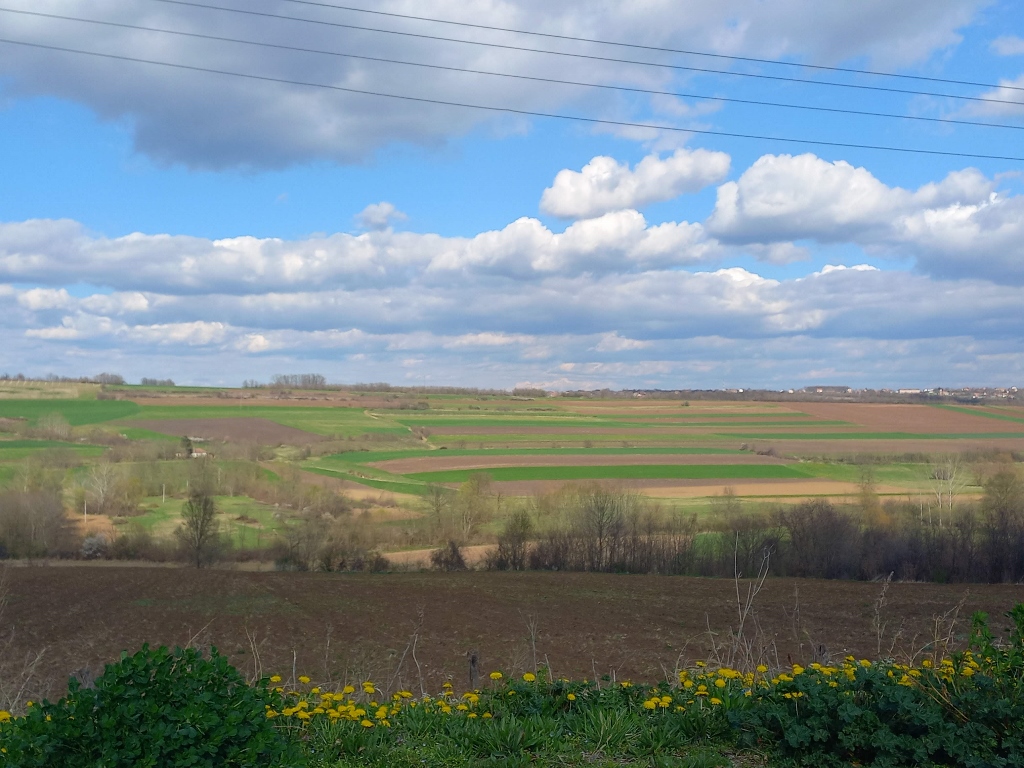 Šumadija in early spring
Šumadija in early spring
First, I drove to the village of Divostin and although I had planned to visit a couple of places there, I decided to continue for now on the main road towards the west to the next village – Drača. Here, it is also necessary to switch to a side road, as it leads to an immovable cultural heritage site of great importance, which is the Drača Monastery.
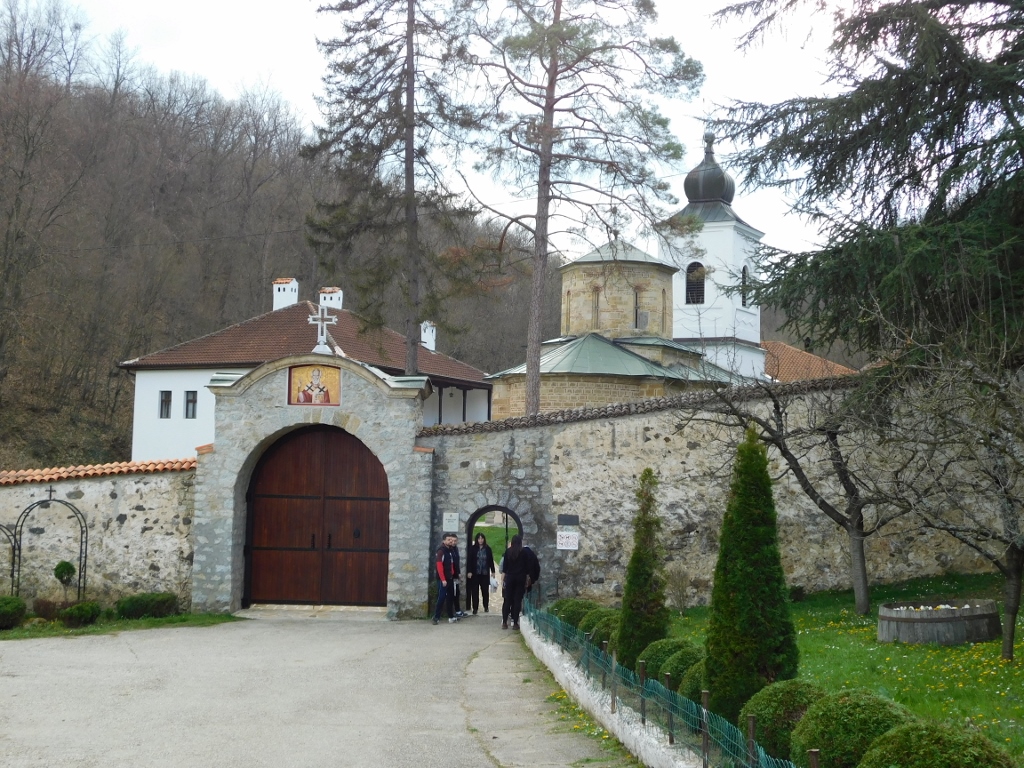 Drača Monastery
Drača Monastery
Within the monastery complex there is a church dedicated to the translation of the relics of St. Nicholas that was renovated in 1734, but this place is much older. It is assumed that the first church was erected here at the end of the 14th century, while it is specifically mentioned in historical sources from the 16th century.
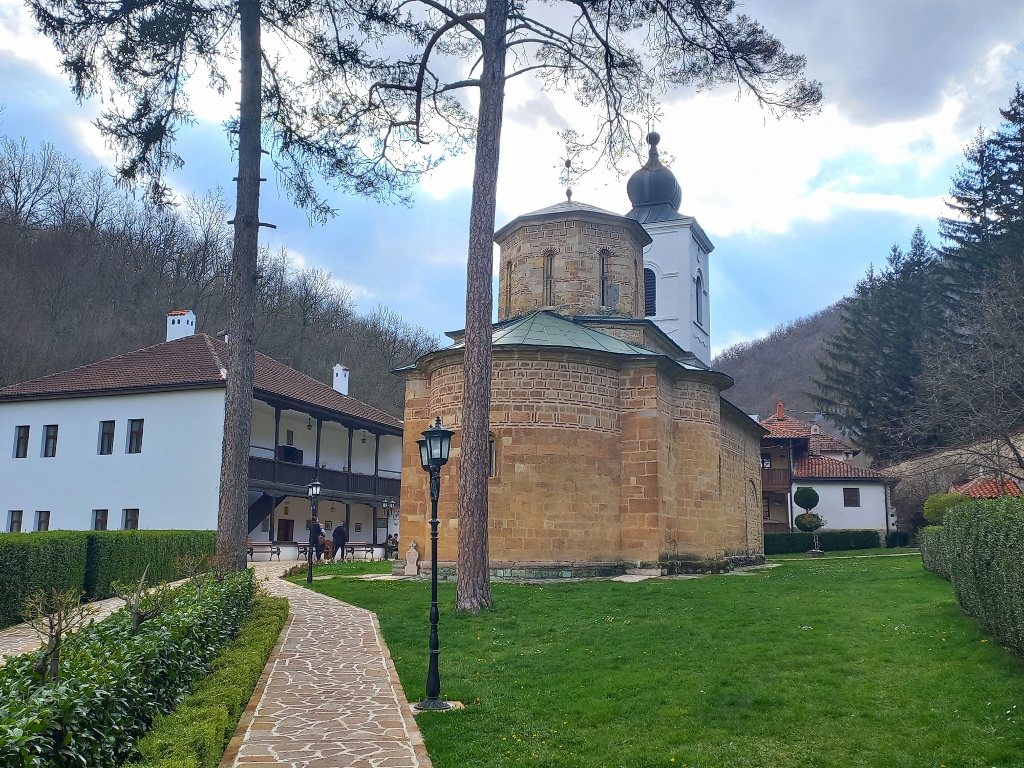 Drača Monastery
Drača Monastery
The church has a trefoil-shaped elongated plan, with a narthex, naos and altar space. Above the naos there is an octagonal dome, while a bell tower was added to the western side of the church later on.
 Church of St. Nicholas
Church of St. Nicholas
One can enter the church through a lateral arched passage in the bell tower or through a similar portal at the front.
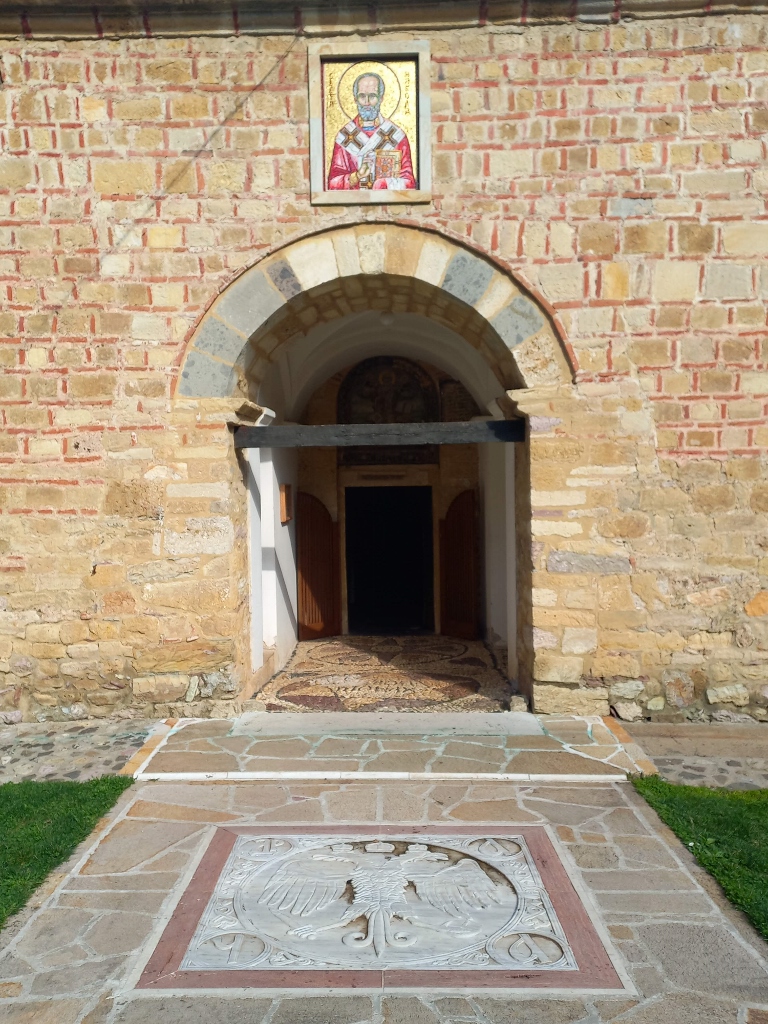 Church of St. Nicholas, a detail
Church of St. Nicholas, a detail
But, before entering the church, one needs to note the fresco of St. Nicholas on the throne in the entrance lunette, as well as the inscription beside the fresco mentioning Prince Miloš, indicating that the bell tower was added precisely in the first half of the 19th century.
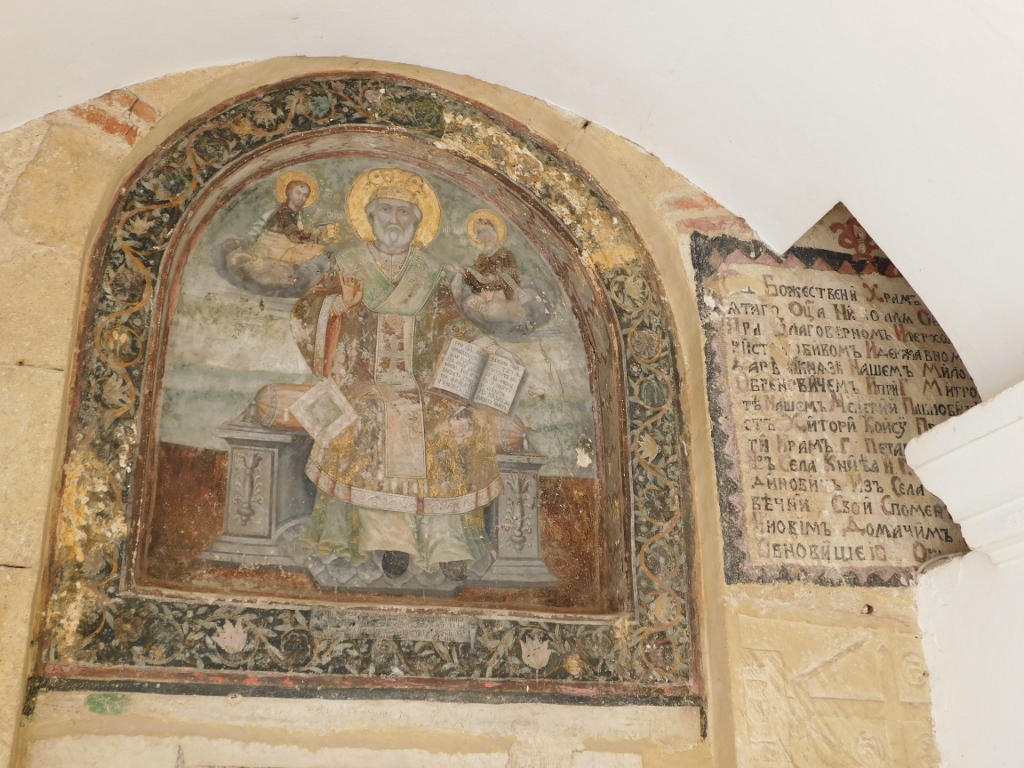 Church of St. Nicholas, a detail
Church of St. Nicholas, a detail
The church was painted in 1735, while research has shown that traces of the previous frescoes can be found beneath this layer. Although I had read that the frescoes in this church were largely preserved, I was completely amazed by the richness and beauty of these frescoes that are also considered among the best in Serbia from the first half of the 18th century.
As soon as one enters the narthex, the opulence of the frescoes overwhelms the visitor.
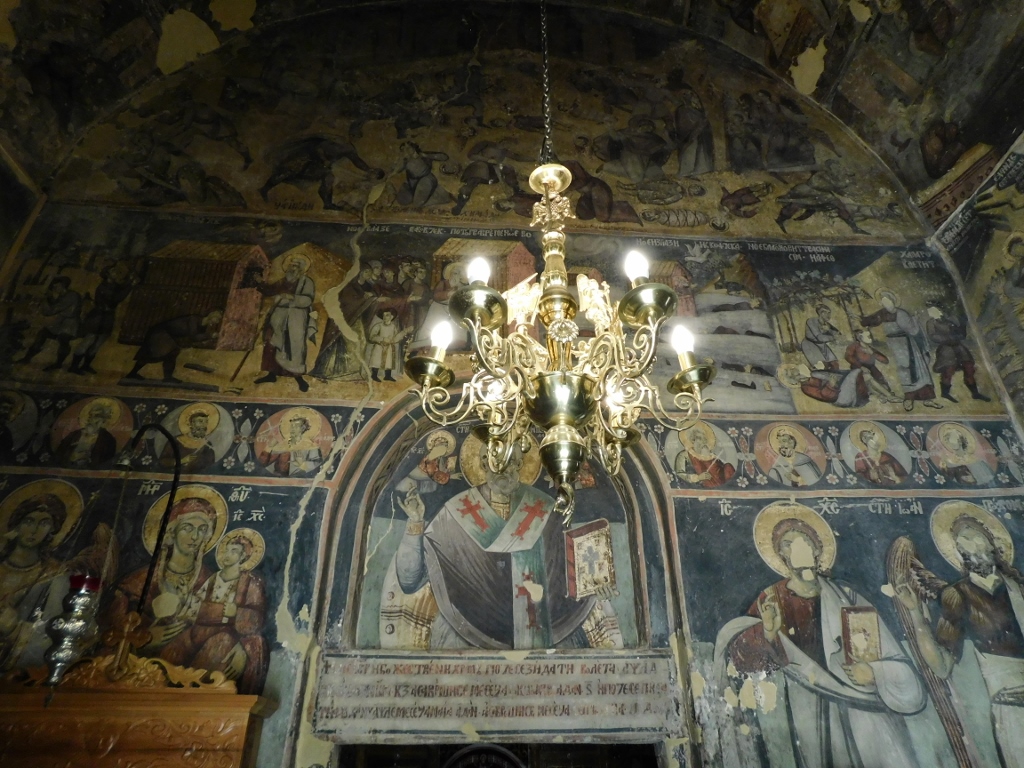 Church of St. Nicholas, a detail
Church of St. Nicholas, a detail
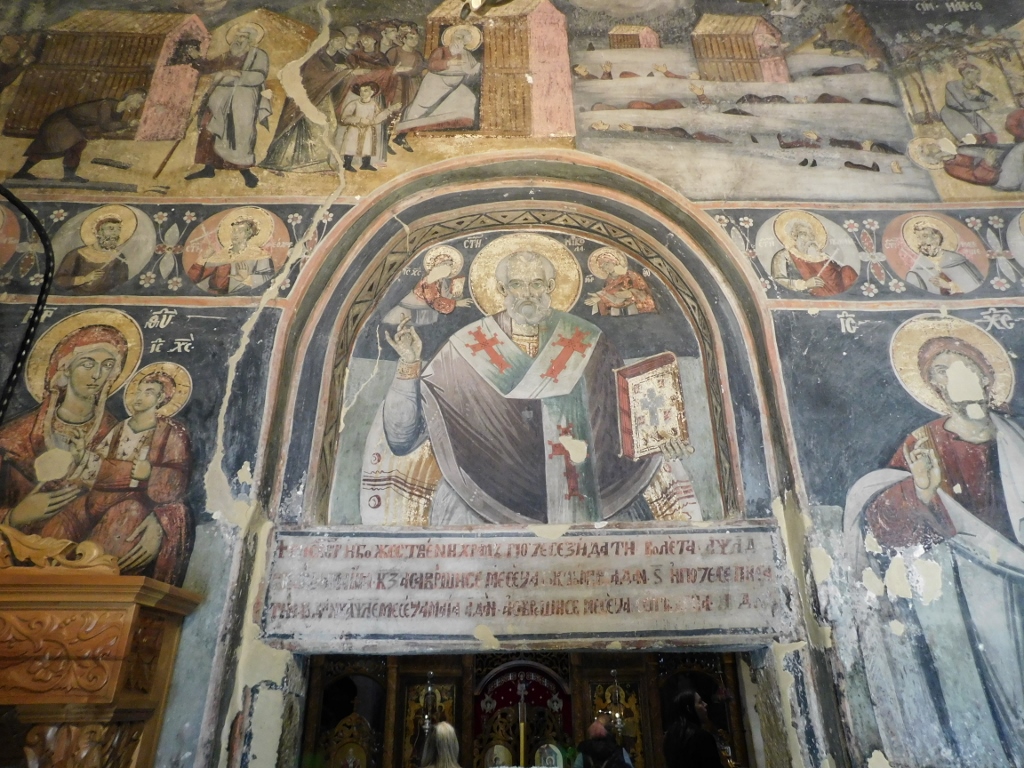 Church of St. Nicholas, a detail
Church of St. Nicholas, a detail
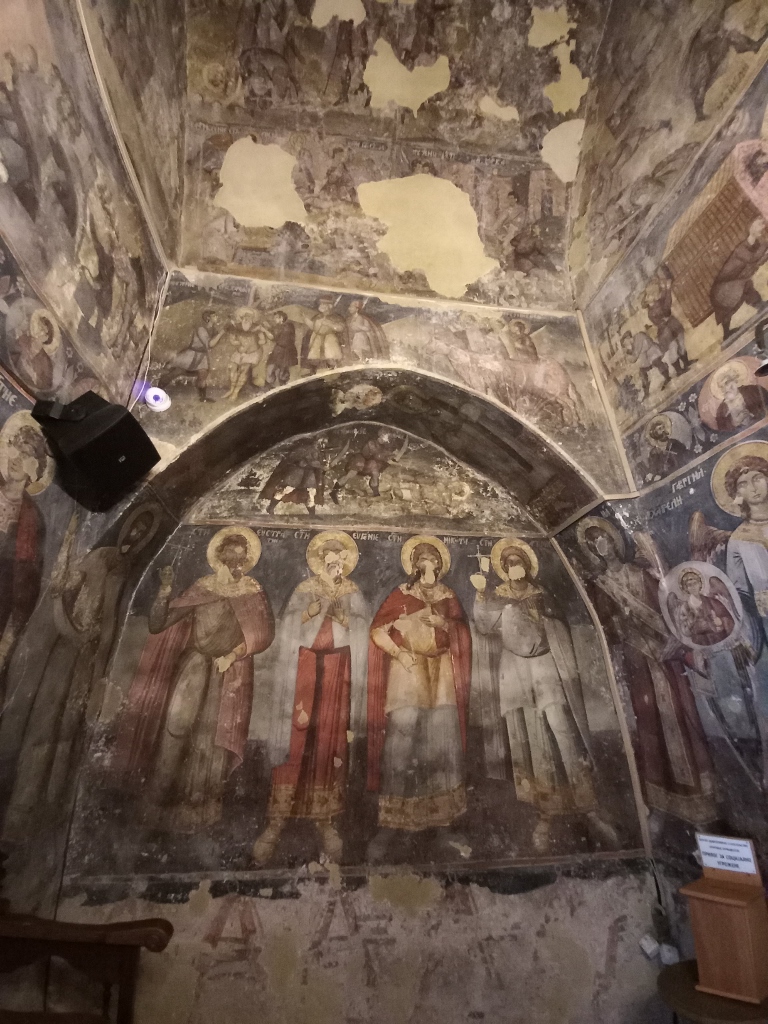 Church of St. Nicholas, a detail
Church of St. Nicholas, a detail
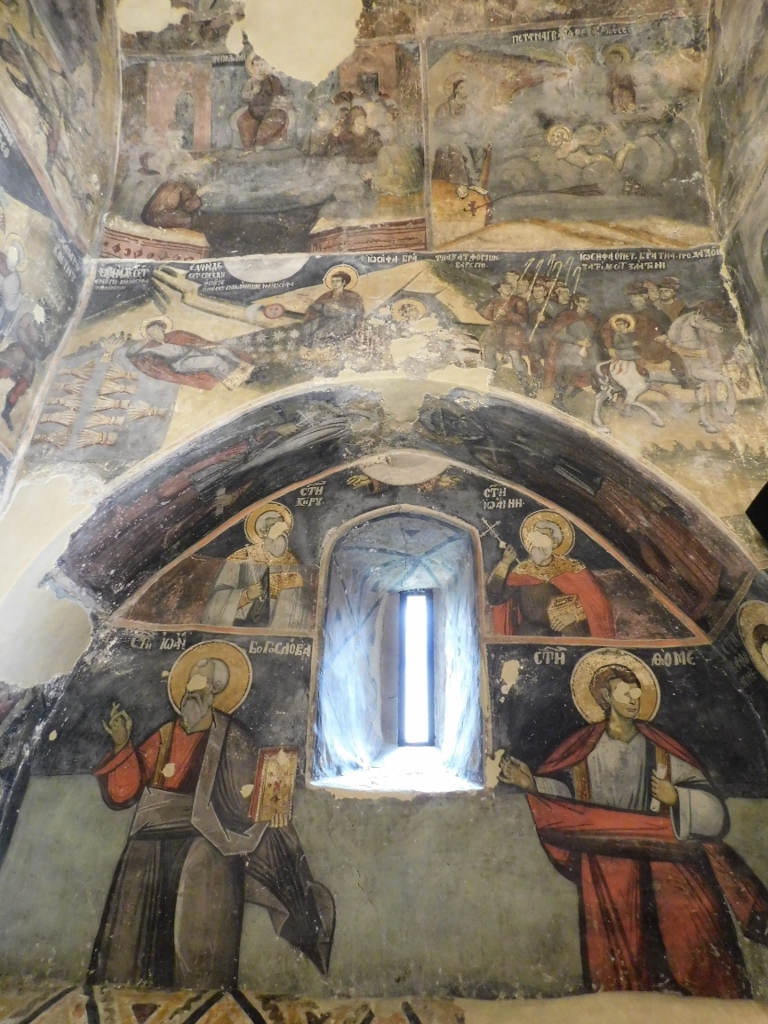 Church of St. Nicholas, a detail
Church of St. Nicholas, a detail
The impressions are no less powerful when one enters the naos and I was absolutely amazed.
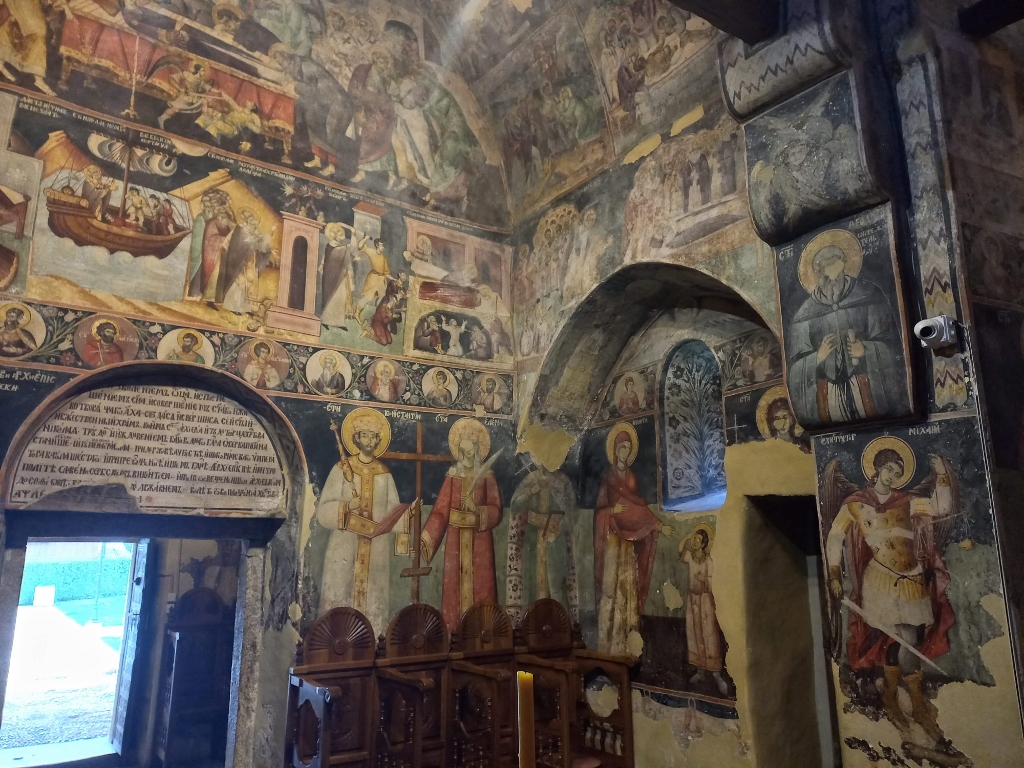 Church of St. Nicholas, a detail
Church of St. Nicholas, a detail
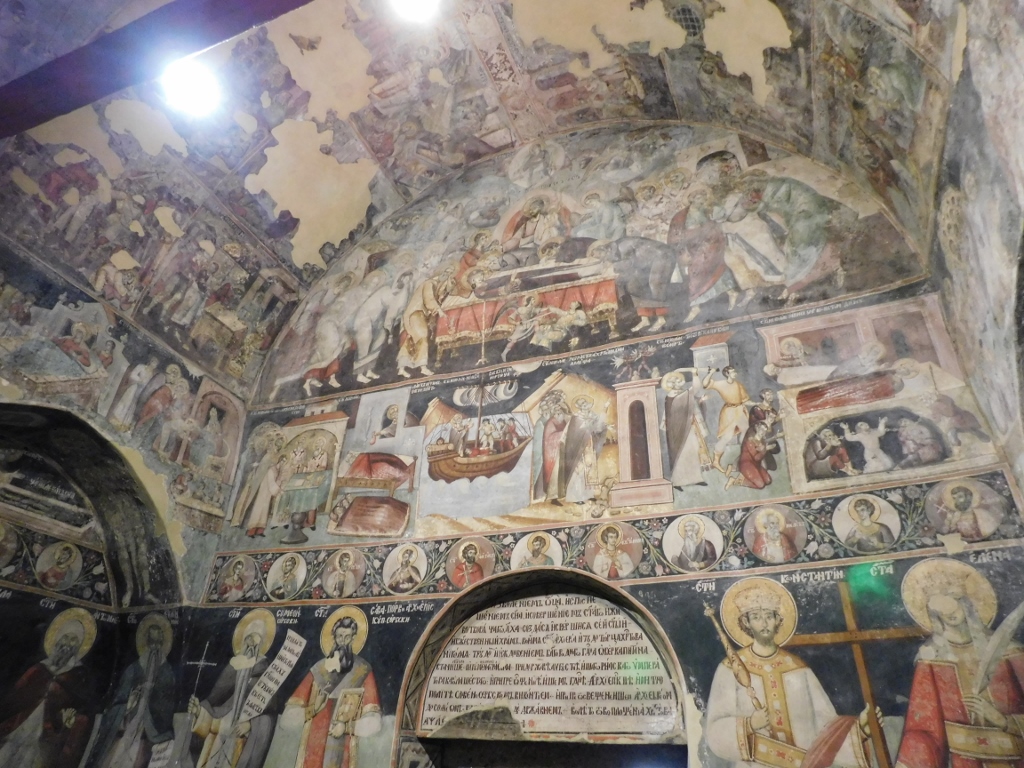 Church of St. Nicholas, a detail
Church of St. Nicholas, a detail
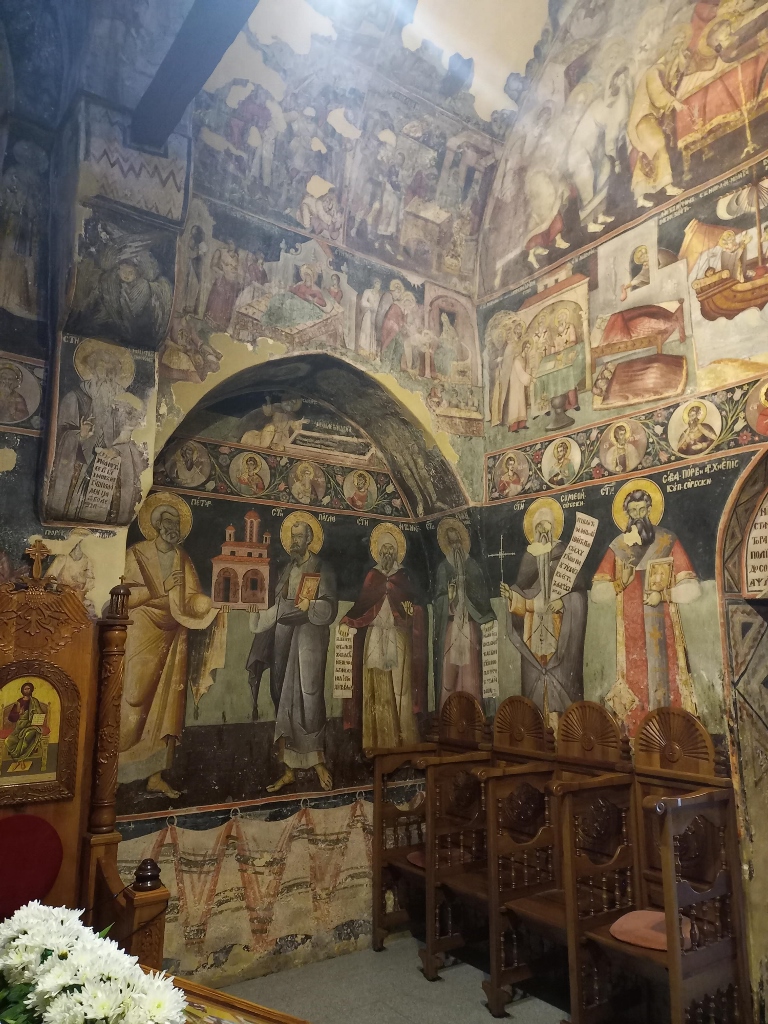 Church of St. Nicholas, a detail
Church of St. Nicholas, a detail
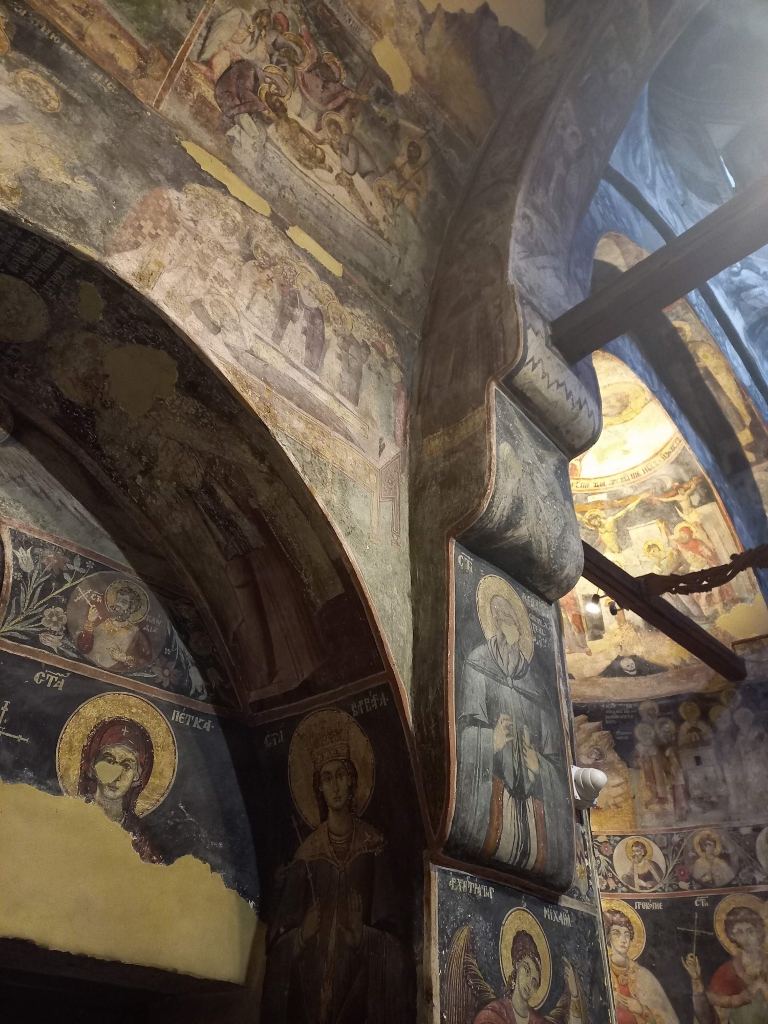 Church of St. Nicholas, a detail
Church of St. Nicholas, a detail
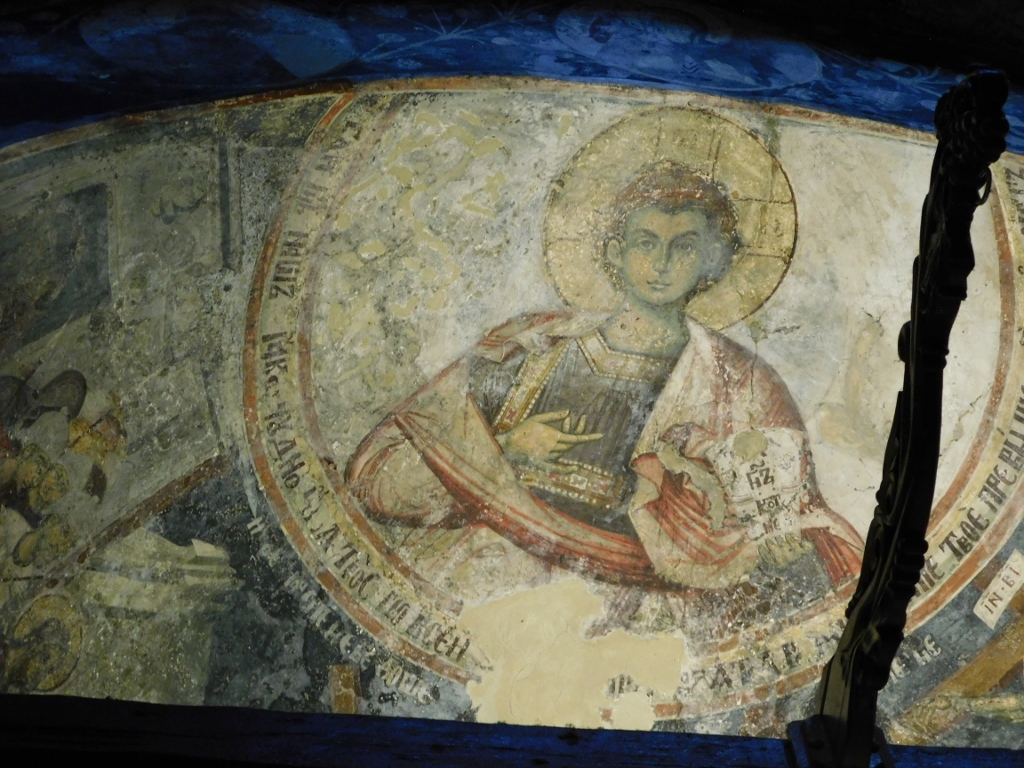 Church of St. Nicholas, a detail
Church of St. Nicholas, a detail
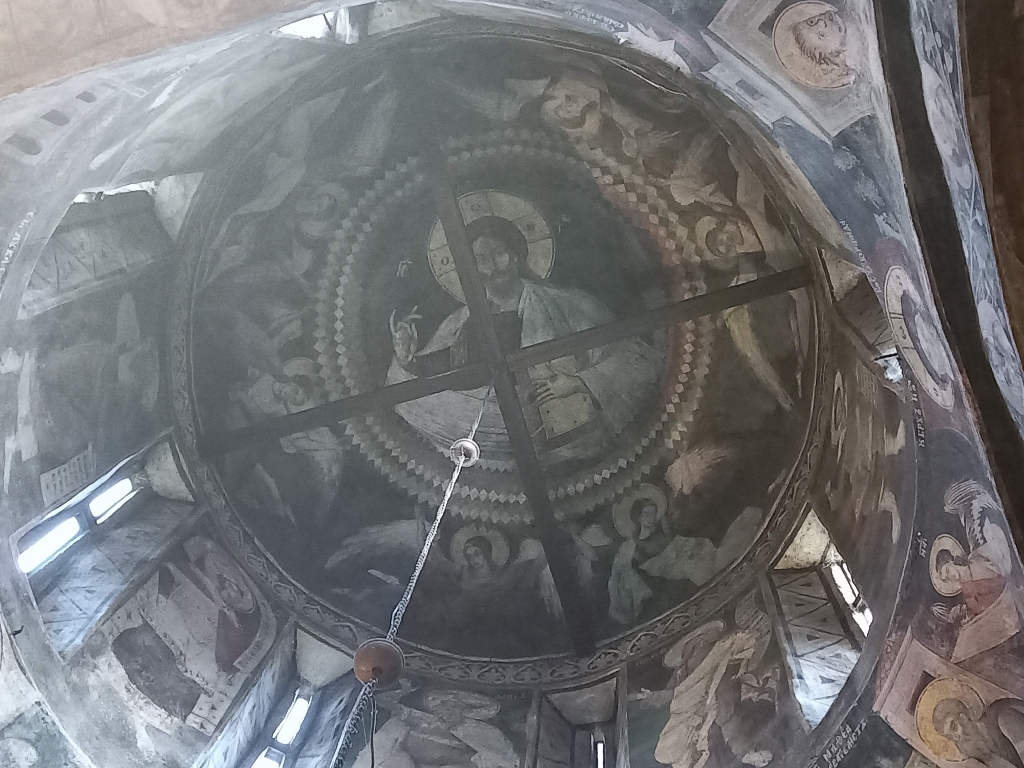 Church of St. Nicholas, a detail
Church of St. Nicholas, a detail
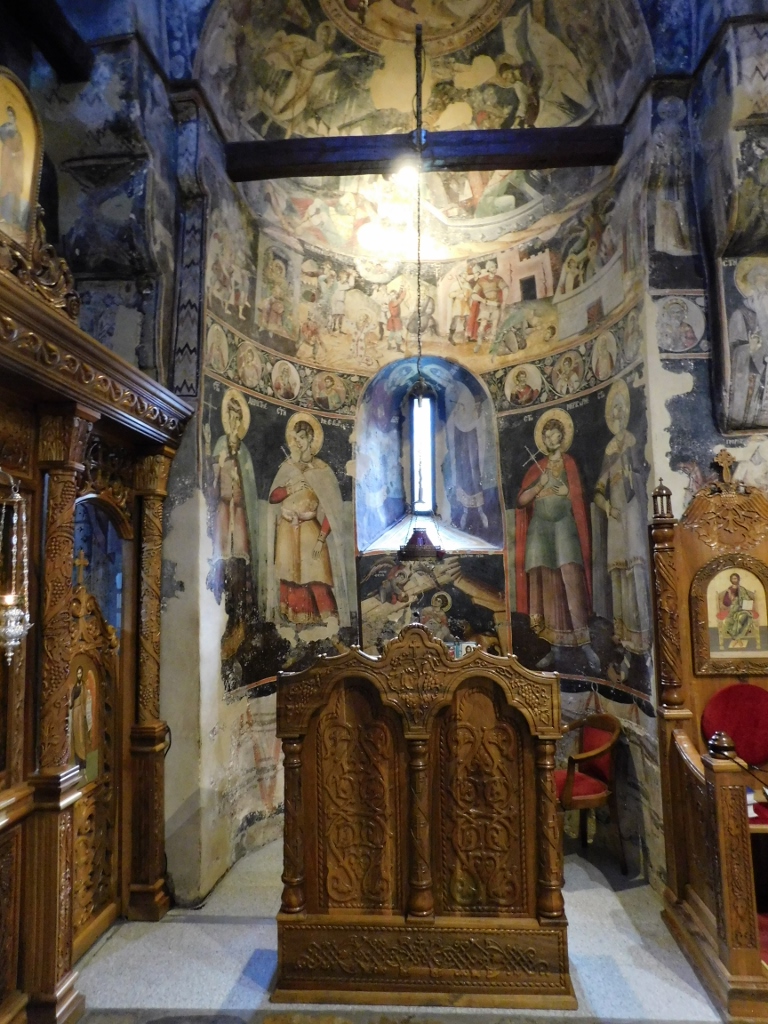 Church of St. Nicholas, a detail
Church of St. Nicholas, a detail
 Church of St. Nicholas, a detail
Church of St. Nicholas, a detail
While I was admiring and photographing the frescoes here, a woman indirectly reproached me for taking photos in the church, saying, “I didn't know it was allowed to take pictures in the church.” I must admit that I didn’t feel guilty at all.
First, I had my camera around my neck, as usual, and it was clearly visible. So, I wasn’t hiding my intention in any way, nor was I doing anything secretly. Second, I didn’t see any nun to ask whether I could or couldn’t take photos and I didn’t notice any signs to that effect. Third, and perhaps most importantly for why I don’t feel any guilt, I take photos in churches, including here, to express my admiration. My photos are not commercialised in any way; my blog is not commercial and the photos I publish there are greatly reduced in resolution compared to the originals, so I don’t believe anyone would benefit from reproducing them.
On the other hand, I believe that by publishing such photographs within the context of my travel stories, I am actually popularising these places, hoping that these images might inspire some of my compatriots who were not previously familiar with the details of these churches (as well as other cultural monuments) and encourage them to see them in person. The same applies to those who read my texts from abroad.
In any case, I continued to explore the church and admire these exceptionally beautiful wall paintings. I returned to the narthex to take a closer look at another important element. However, I had to wait a bit for that because the narthex also houses a miraculous icon of the Mother of God of Akhtyr that was brought here from Ohrid in the early 18th century.
As I stood there, several women approached the icon and kissed it and I patiently waited for them to finish with their prayers.
The reason I stood there and waited is that to the right of the entrance into the narthex there is an arcosolium where the relics of the Venerable Job Sinaita, who is particularly revered and honoured in the Drača Monastery, were transferred from the church in the nearby village of Prekopreča that was demolished in the past.
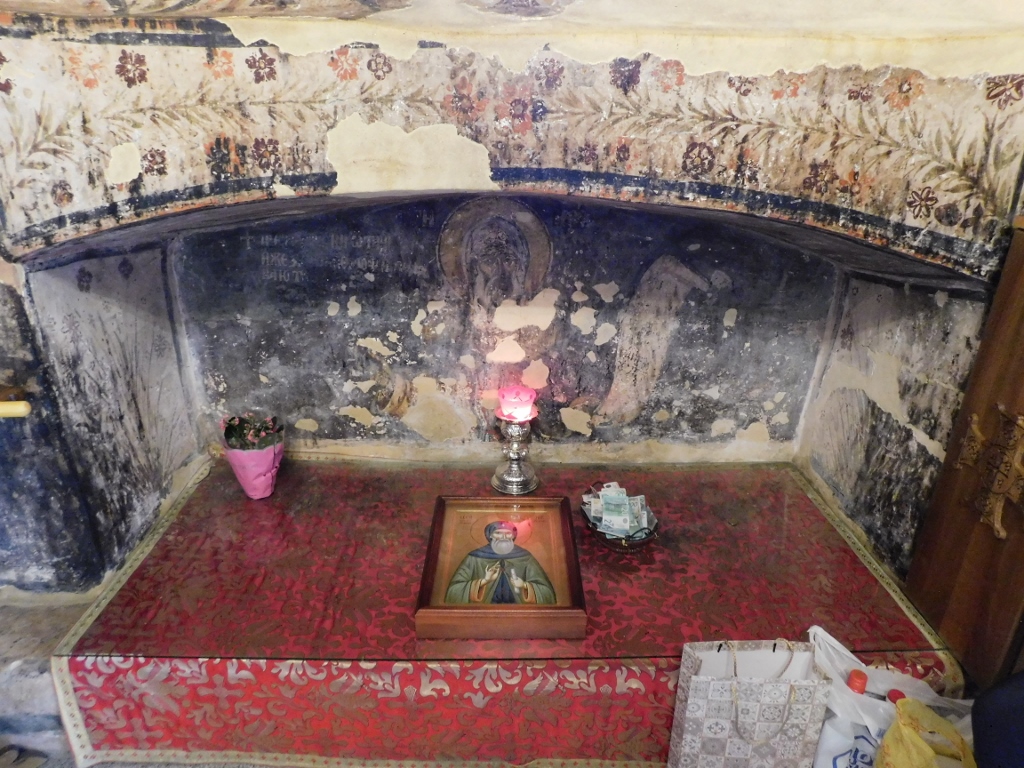 Church of St. Nicholas, a detail
Church of St. Nicholas, a detail
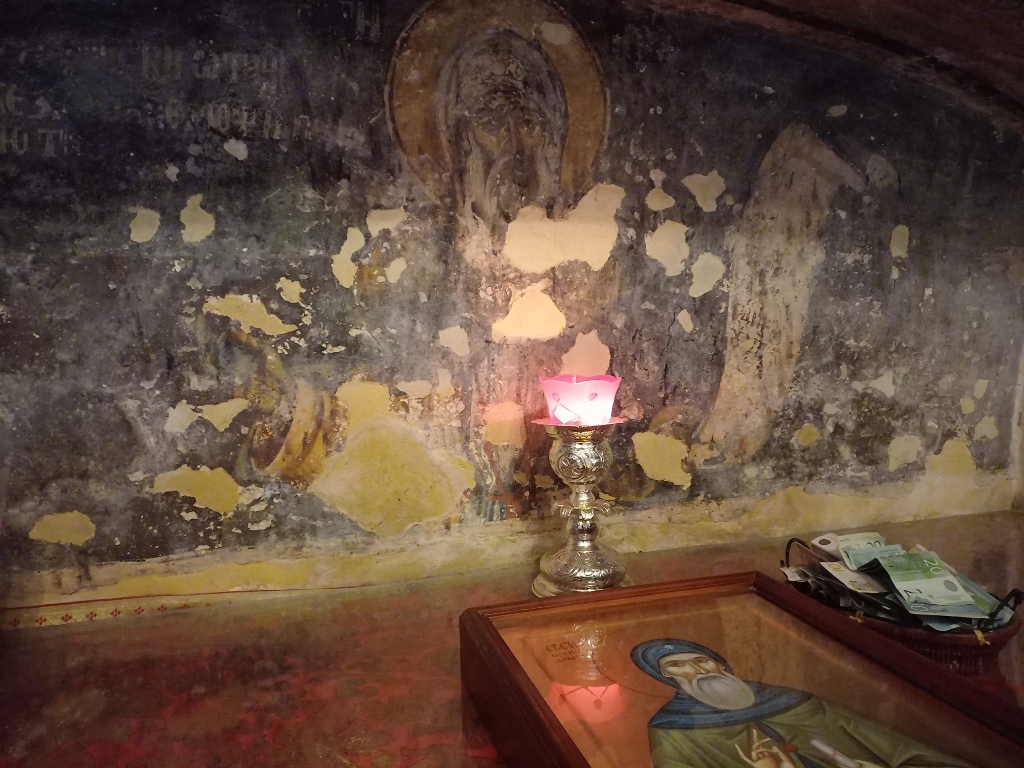 Church of St. Nicholas, a detail
Church of St. Nicholas, a detail
After finishing with my tour of the interior of Church of St. Nicholas, I went to the monastery shop where I bought some locally made products. I always like to purchase something from the monasteries I visit, hoping that, in this way, I contribute albeit modestly to the sustainability of these spiritual communities. Later, I heard that the medicinal products prepared at the Drača Monastery are particularly effective and it’s enough to tell the nuns about one’s health problems and they would recommend something suitable. Of course, besides this, various spiritual books and souvenirs are also available in the shop.
As I walked towards the exit of the churchyard, I briefly observed some tombstones along the walls of the church, dating back to the first half of the 19th century.
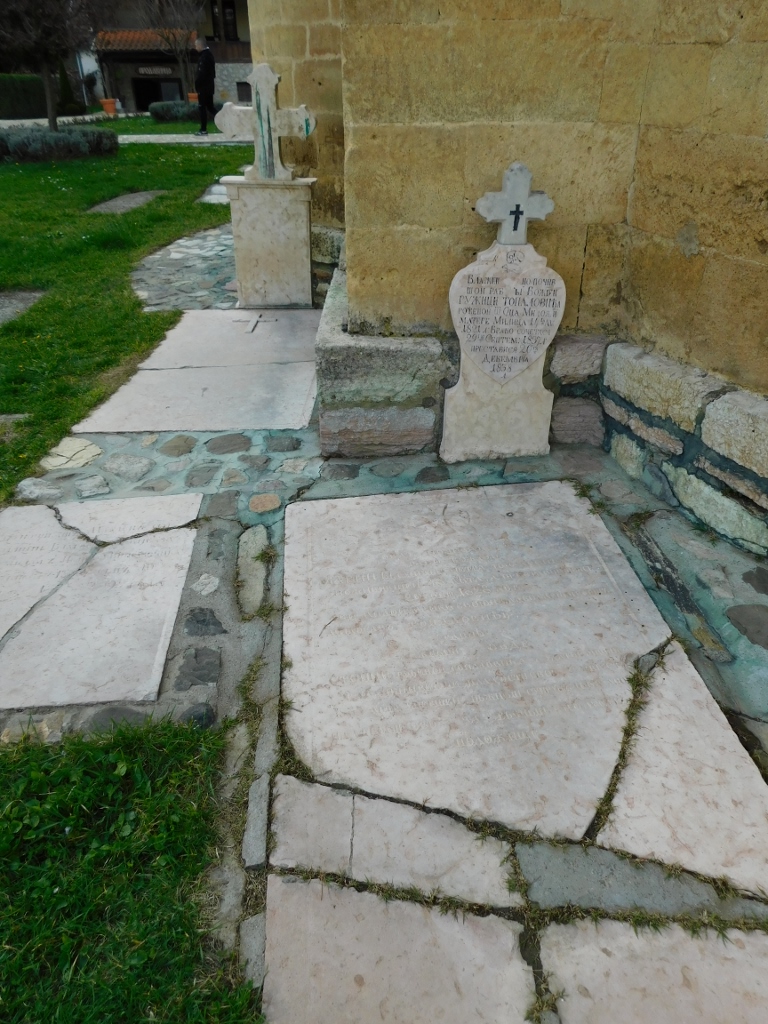 Drača Monastery, a detail
Drača Monastery, a detail
Now I returned to the village of Divostin where there were a couple of interesting and important cultural monuments. So, I first visited the Divostin Monastery and its church dedicated to the Annunciation.
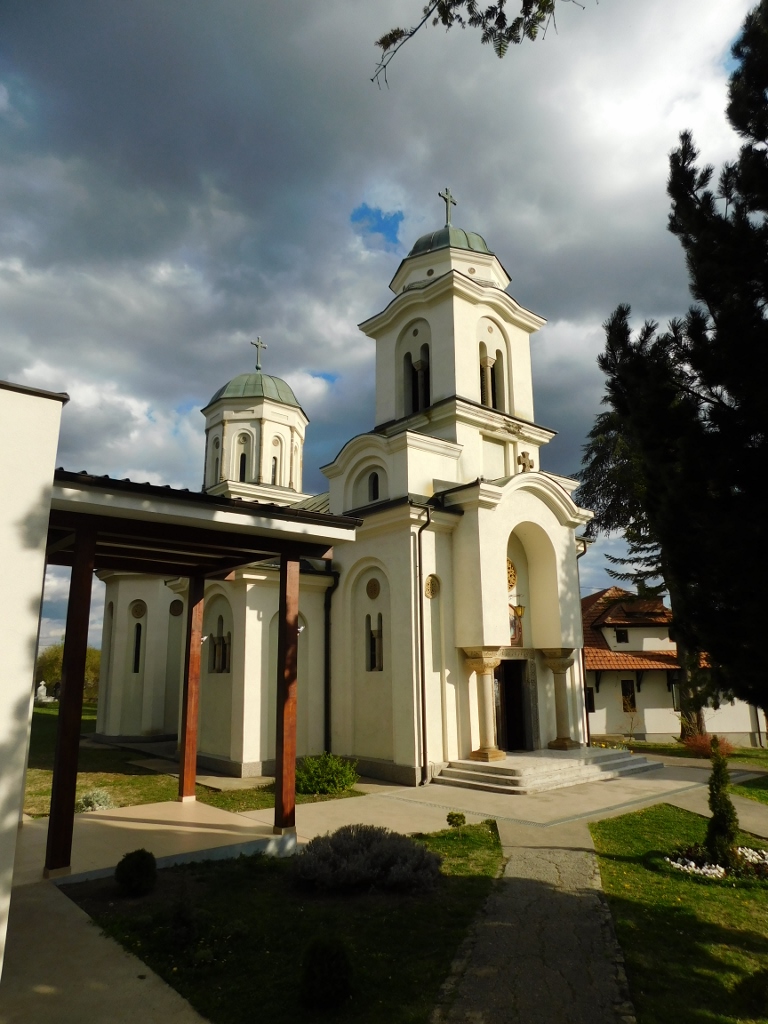 Divostin Monastery, Church of the Annunciation
Divostin Monastery, Church of the Annunciation
The church that can be seen here today was built in 1974, on the site where several churches were previously erected, while it is believed that the monastery was founded in the early 15th century.
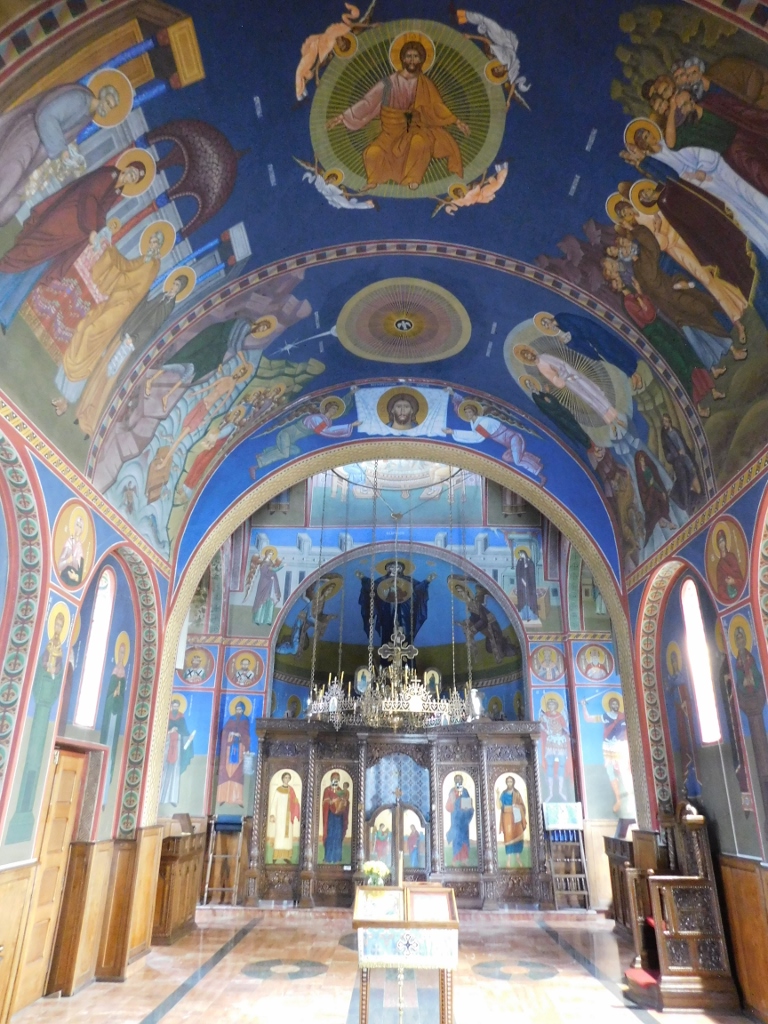 Divostin Monastery, Church of the Annunciation, a detail
Divostin Monastery, Church of the Annunciation, a detail
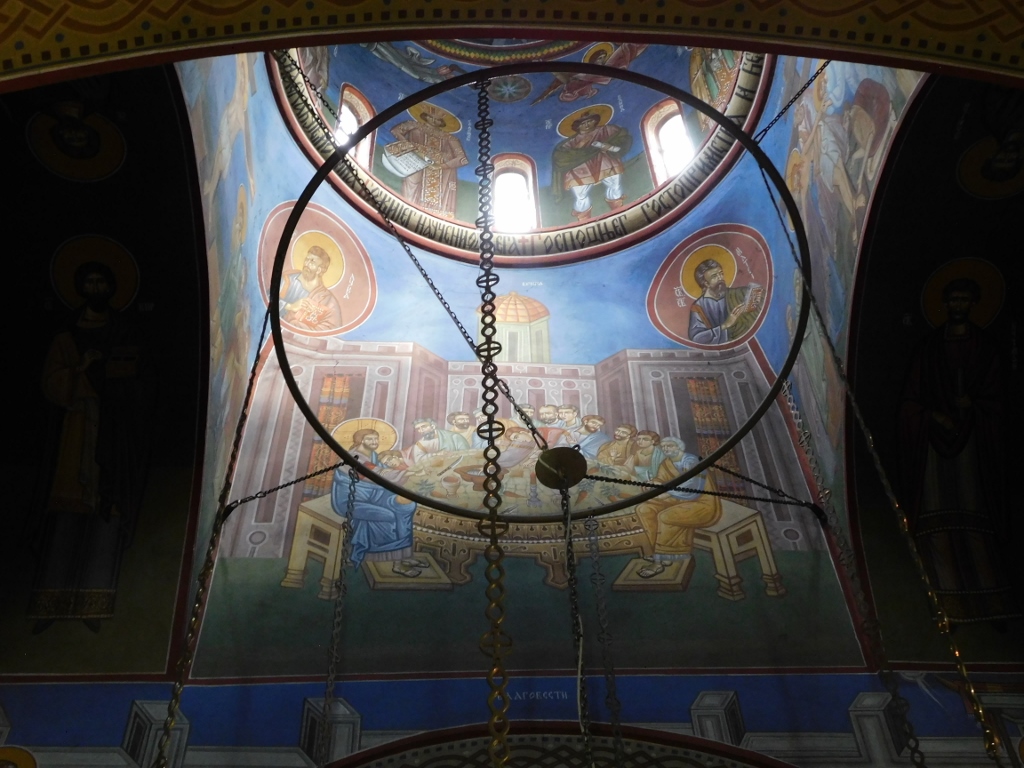 Divostin Monastery, Church of the Annunciation, a detail
Divostin Monastery, Church of the Annunciation, a detail
This monastery, located in the village of Divostin itself, is worth visiting not only for its cultural significance, but also for a monument located downhill, southwest of the church and the monastery quarters. It is a memorial fountain dedicated to King Milan Obrenović (b. 1854-1901), who ruled as prince from 1868 to 1882 before being proclaimed king (1882-1889), succeeded by his son, King Alexander I Obrenović.
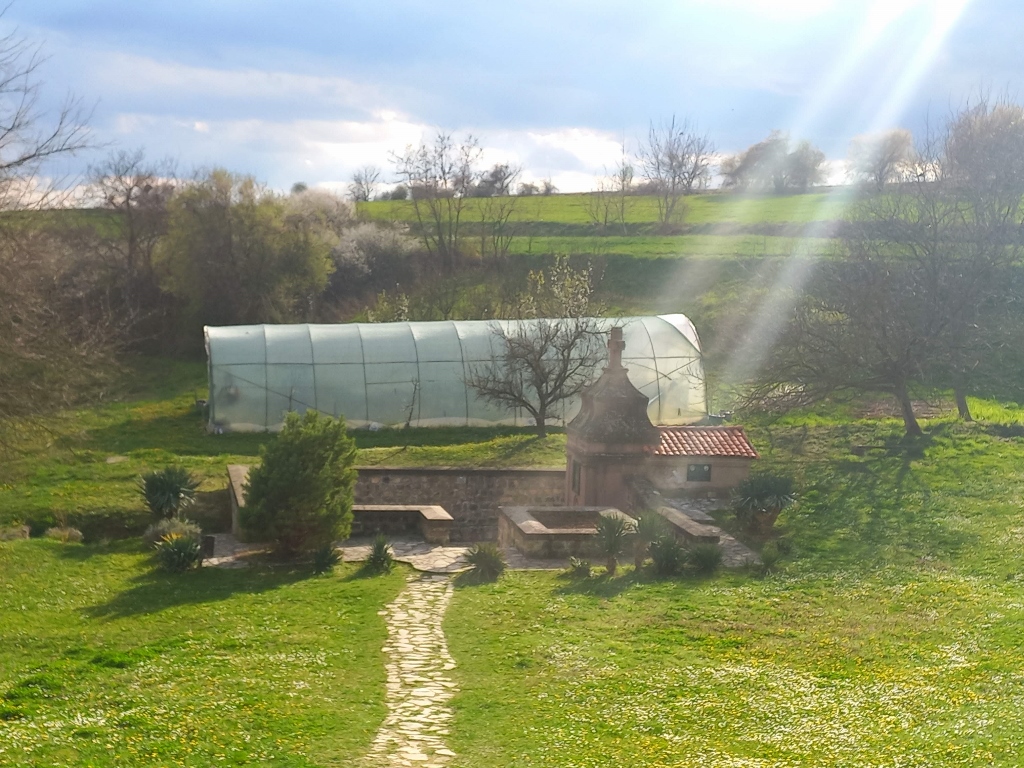 Divostin Monastery, memorial fountain
Divostin Monastery, memorial fountain
The memorial fountain was erected on 20 June, 1901, in honour of the king who had passed away a few months earlier. The fountain is dug in, with two staircases leading to the basin. The entire monument was executed in a monumental style – the walls surrounding the fountain and the channel are made of rubble stone, while the fountain itself is constructed from hewn stone blocks.
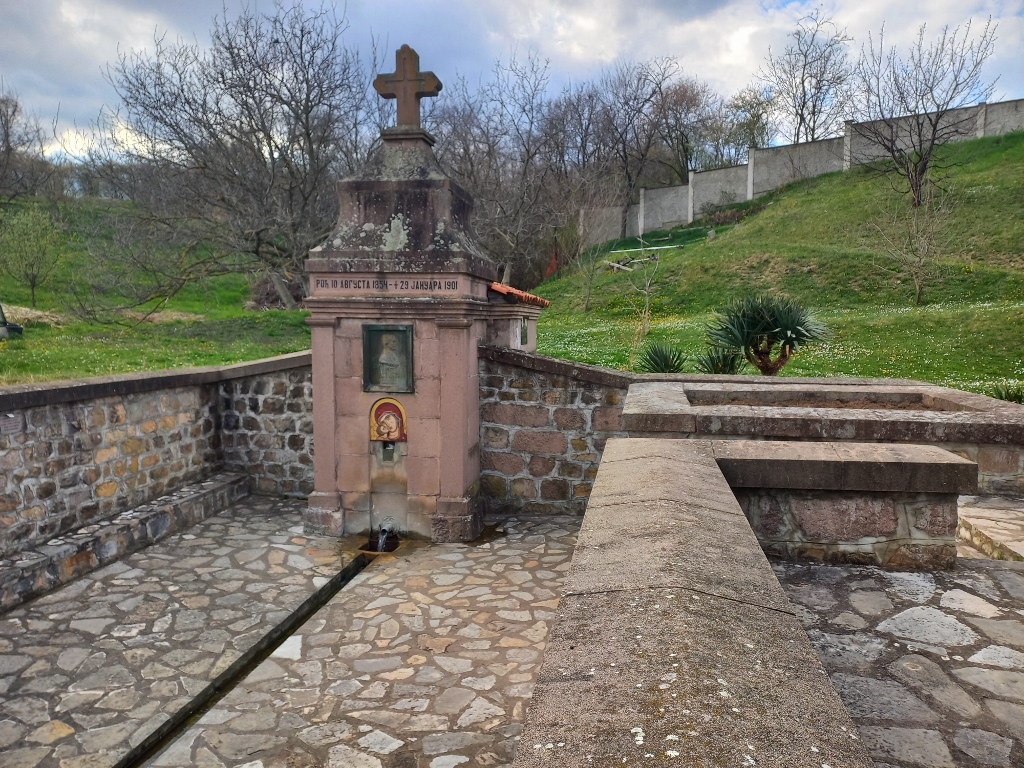 Divostin Monastery, memorial fountain dedicated to King Milan Obrenović
Divostin Monastery, memorial fountain dedicated to King Milan Obrenović
On the front side of the monument, there is a plaque with a bronze relief bust of King Milan and below it there is a mosaic of the Mother of God with Christ. At the bottom is the spout of the fountain, while the water source was renovated in 2001.
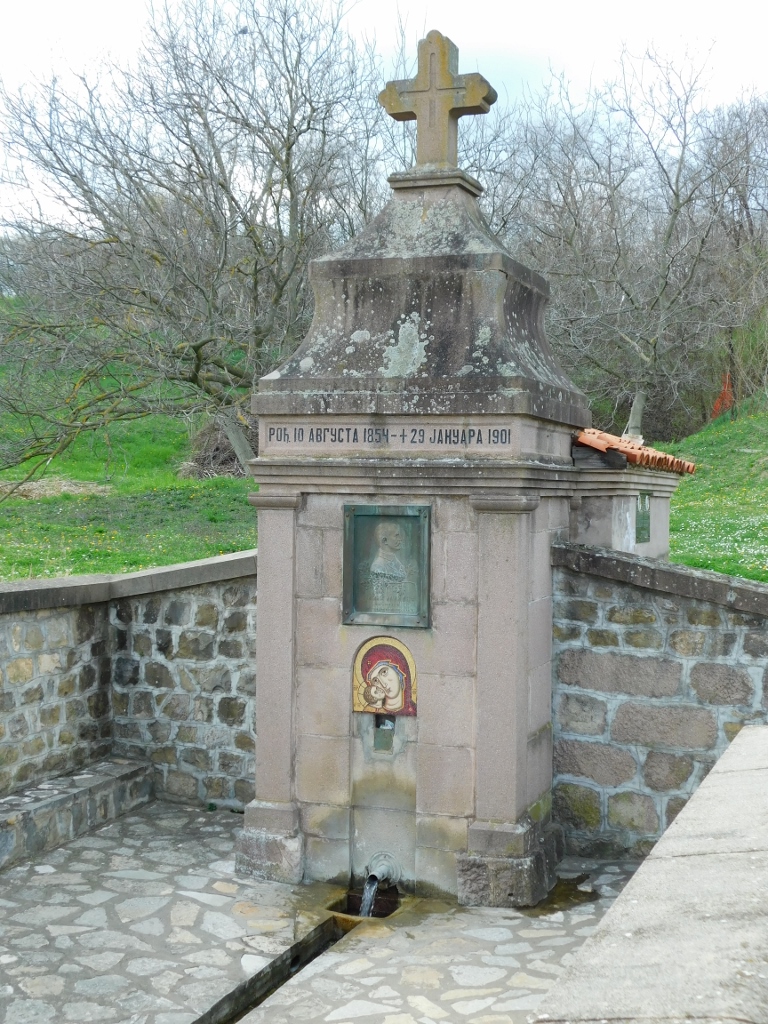 Divostin Monastery, memorial fountain dedicated to King Milan Obrenović
Divostin Monastery, memorial fountain dedicated to King Milan Obrenović
As I’ve read, behind the fountain, there is some kind of pump, but what caught my eye was another memorial plaque installed by parents who lost two sons early in life – one died at the age of 20 in World War II, while the other perished in a traffic accident at the age of 42. Although I don’t have children, I believe there is nothing more heartbreaking in this world than when parents outlive their offspring.
After this, I drove just a few hundred metres further along the main road, where I stopped again. According to the materials I used when planning this trip, somewhere around here, almost in the centre of Divostin, “between the church, school and community centre,” there are remnants of a prehistoric settlement, which, as an archaeological site from the early and late Neolithic periods, represents immovable cultural property. Discovered in 1952, during subsequent research, over 2000 square metres of it were explored and more than 100,000 items were found, including stone tools, objects made of animal bones, pottery, etc. However, like some other archaeological sites I have tried to locate during my travels in Serbia, this one is not developed and lacks any informational signs. Perhaps everything valuable has already been excavated and the site has been reburied, but the place where excavations were conducted is still considered significant enough to be marked on maps by relevant institutions.
Be as it may, I took a photo of a meadow in the centre of the village, by the roadside, as there could possibly be something from prehistory beneath the grass growing there today. Equally likely, there may have never been anything there except a simple field or meadow. I also took a photo of the primary school building. Just in case.
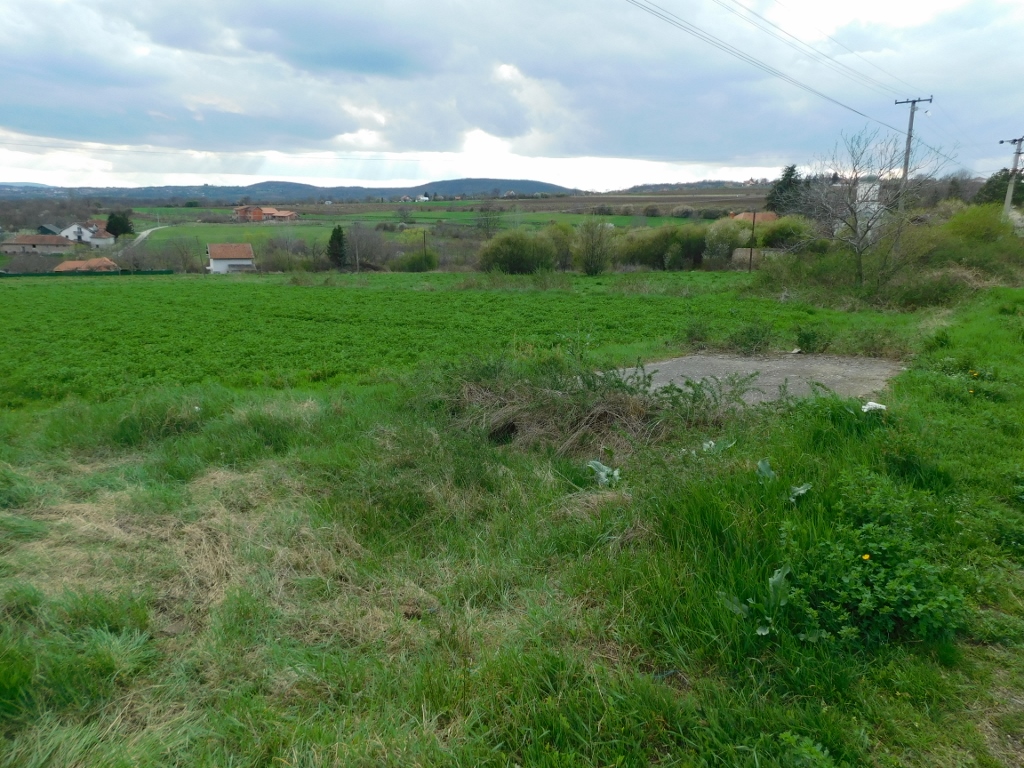 Possible location of the archaeological site in Divostin
Possible location of the archaeological site in Divostin
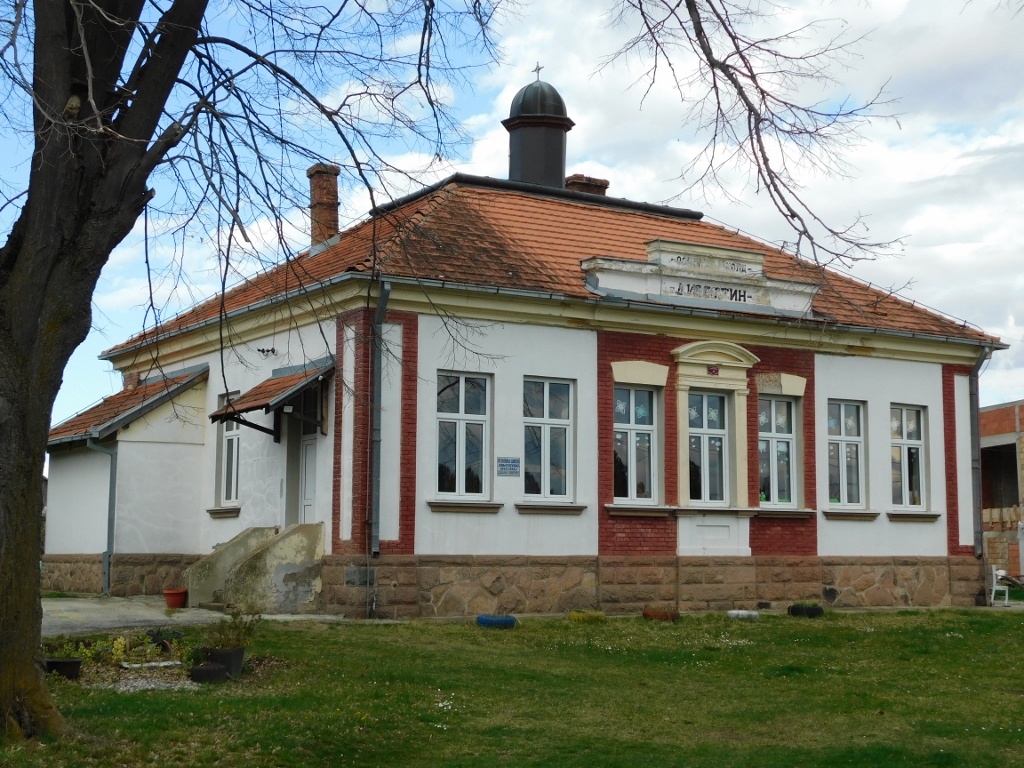 Primary school in Divostin
Primary school in Divostin
The main street through Divostin is also the main road leading to the centre of Kragujevac, passing through the Memorial Park “Kragujevački Oktobar” in Šumarice. Although I have been here with my school and a few times later, my plan was to revisit this memorial park thoroughly, but this time I just stopped by to refresh my memory of how the area is organised and to get better orientation about the place. For now, I just took a photo of the 21 October Museum. I will write about the significance of this memorial park in one of the upcoming sequels of my travelogue about the visit to Kragujevac and its surroundings.
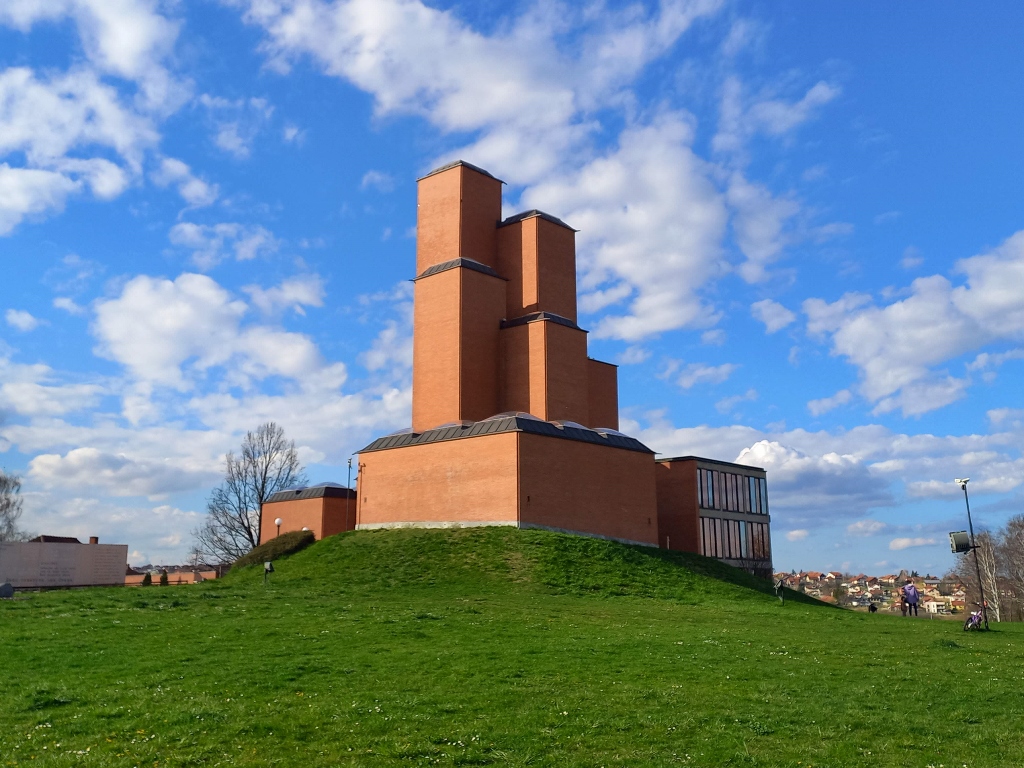 The 21 October Museum
The 21 October Museum
The day was drawing to a close, because after all it was still early spring and the days were relatively short. I first drove into Kragujevac, but immediately continued on to the village of Grošnica because I planned to visit two more cultural monuments there before finally returning to the centre of Kragujevac where I had a room reserved in a hotel.
First, I went to see a cultural monument called Petrova vodenica (Peter’s Watermill), which is only a few dozen metres from the main road. As I approached the watermill, I was thrilled by how beautiful it looked.
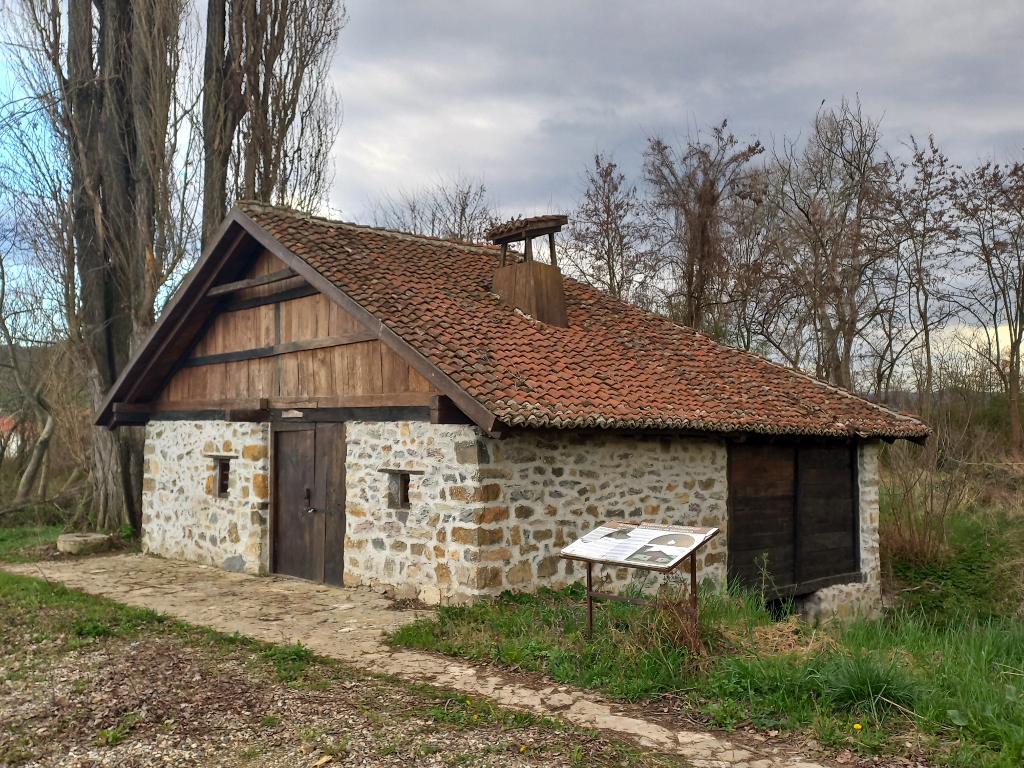 Peter’s Watermill in the village of Grošnica
Peter’s Watermill in the village of Grošnica
I was expecting some dilapidated wooden watermill, but this one, built in the late 18th century, was in excellent condition from the outside.
The watermill is constructed from stone bound with lime mortar and has a three-slope roof covered with Monk and Nun roof tiles. When viewed from one side, one can see a section of the wall constructed in the half-timber style.
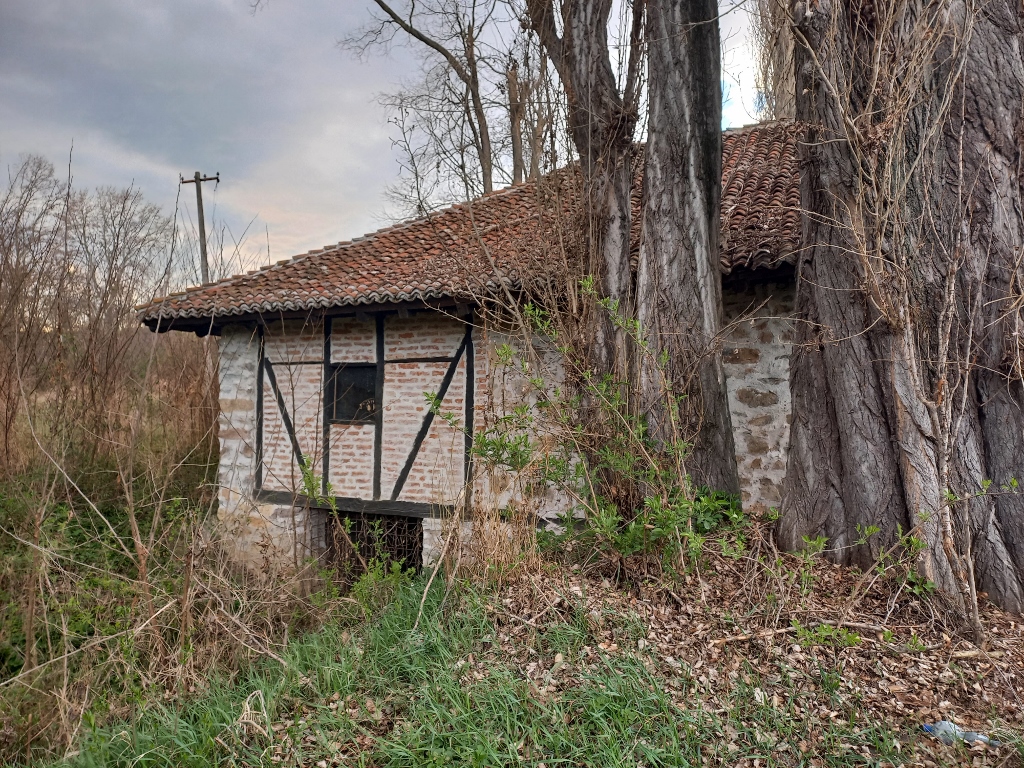 Peter’s Watermill in the village of Grošnica
Peter’s Watermill in the village of Grošnica
In the Šumadija region, the mills traditionally operated by using water power. The construction was done using a standard technique and the mills operated using the same type of mechanism. The village of Grošnica near Kragujevac was evidently very popular for constructing watermills, with 16 of them in the second half of the 19th century and even 35 mills by the third decade of the 20th century. By 2021, only one watermill had survived, this one here, which underwent conservation works in 2019, preventing its complete collapse. Today, it has been converted into a branch of the National Museum of Šumadija in Kragujevac. However, this doesn’t mean that Peter’s Watermill is open all the time. A sheet of paper displayed in the window states that the mill is open for visits every first Wednesday of the month from 10 am to 12 pm, with free entry. Though, if groups were to visit, this could be arranged by phone and the museum staff would likely come to open the mill for the visitors.
So, I didn’t enter the watermill, but from what I’ve read, it was divided into three rooms – one for the mill itself, another for storing flour and the third for the miller. I don’t know how the interior of the watermill is organised today (when I peeked through the window, I mostly saw dust), but it seems that the basic layout has been preserved.
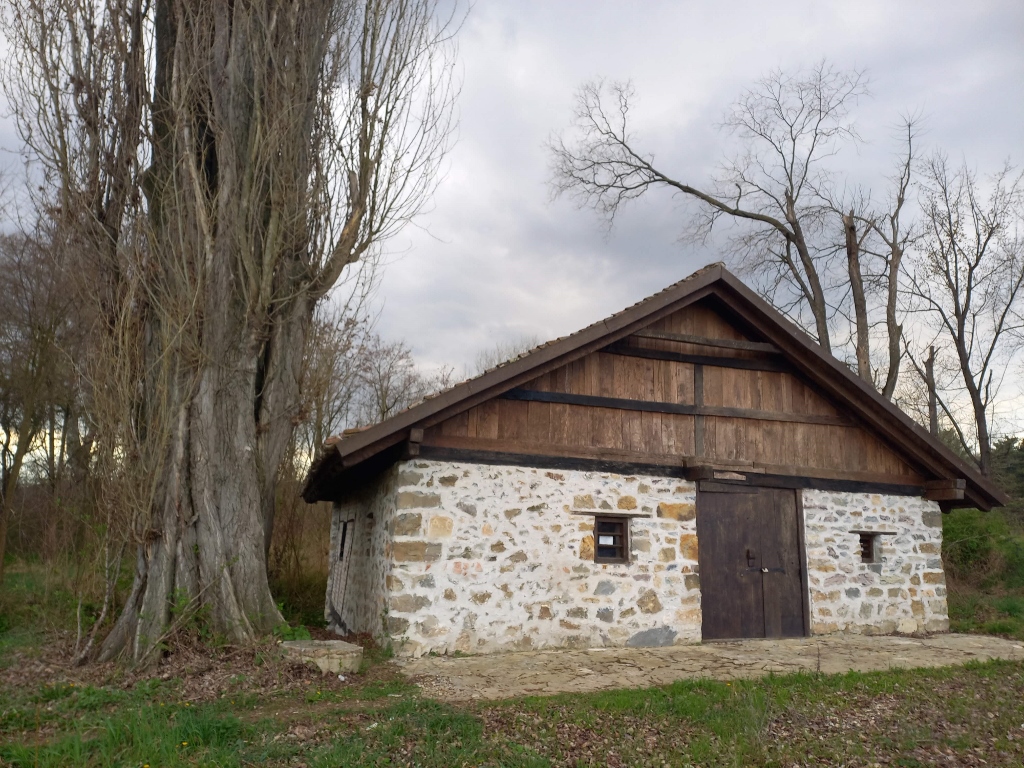 Peter’s Watermill in the village of Grošnica
Peter’s Watermill in the village of Grošnica
The watermill is also significant as a historical site because on 12 July, 1941, a meeting of the District Committee of the Communist Party of Yugoslavia for the Kragujevac area was held here, during which the decision to launch an uprising in the region was made.
After I had finished photographing the watermill, I got back into the car and drove less than a kilometre farther to the Church of Sts. Peter and Paul in Grošnica.
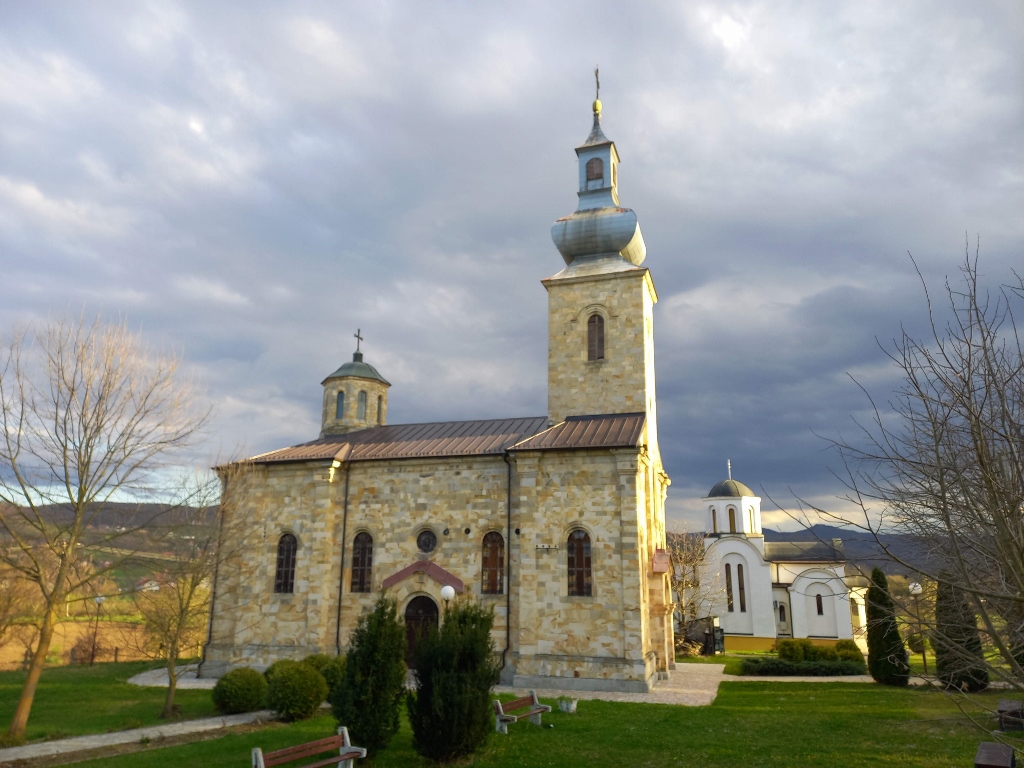 Church of Sts. Peter and Paul in Grošnica
Church of Sts. Peter and Paul in Grošnica
The church was built in 1857, during the second reign of Prince Miloš, and today it is classified as a cultural monument.
Above the section of the church in front of the iconostasis, a relatively smaller octagonal dome is erected, while on the western side stands a Baroque bell tower.
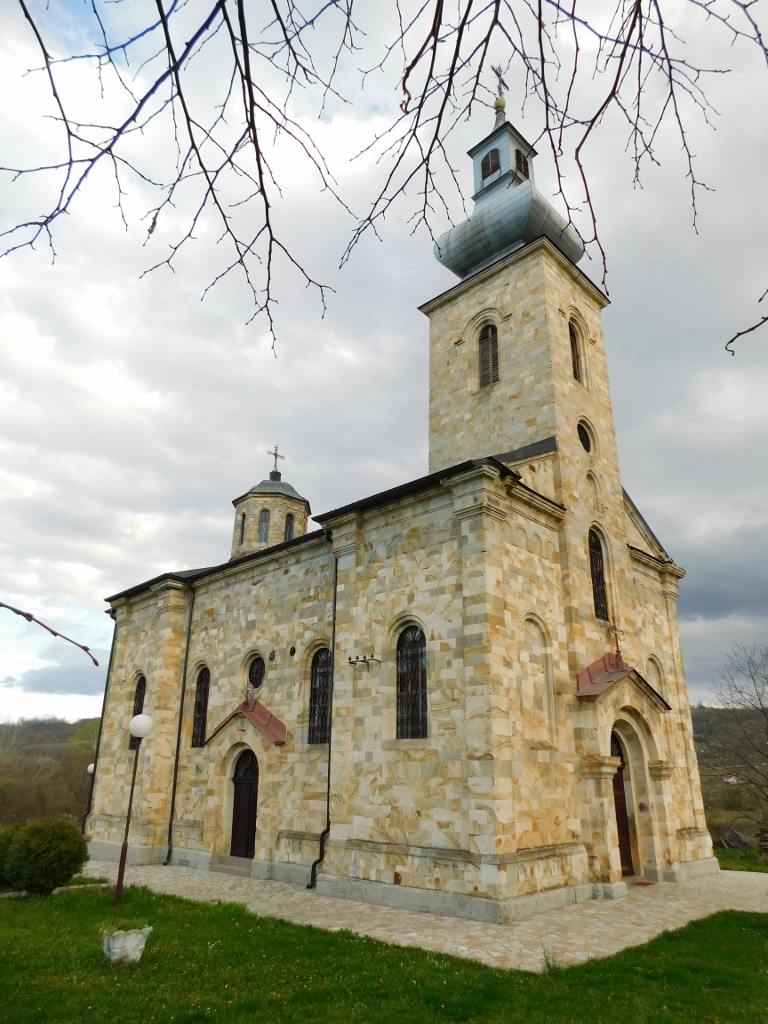 Church of Sts. Peter and Paul in Grošnica
Church of Sts. Peter and Paul in Grošnica
The facade is made of sandstone and is characterised by simple yet harmonious and beautiful decoration – among other things, there are blind arcades on corbels that are clearly visible beneath the cornice.
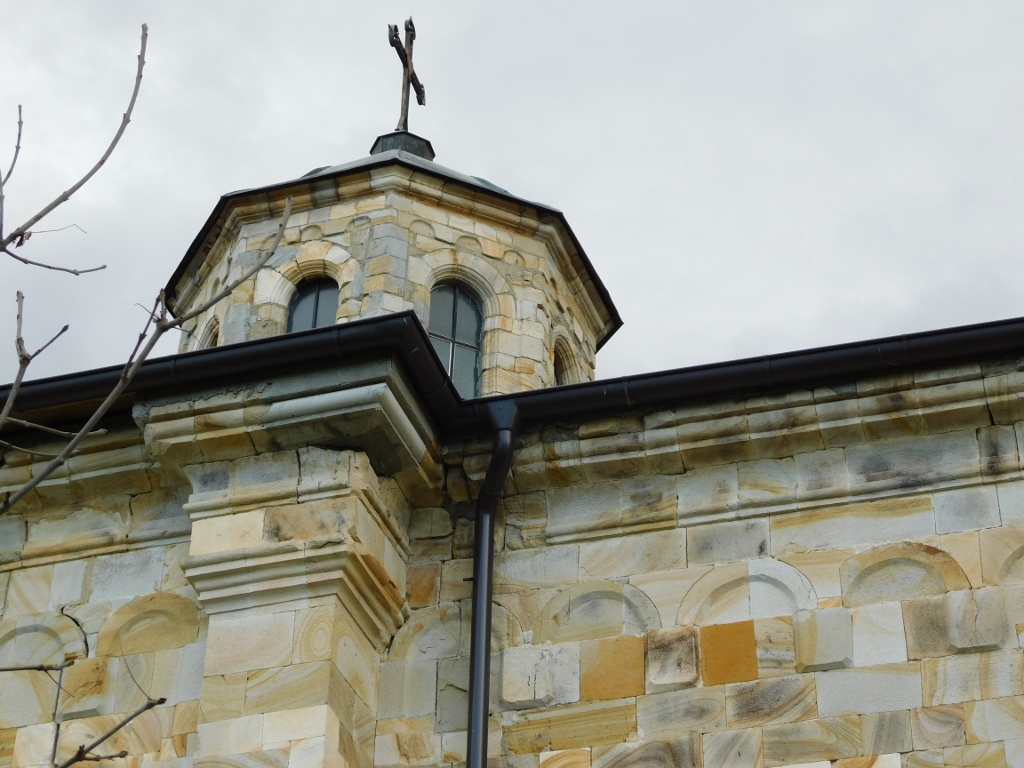 Church of Sts. Peter and Paul in Grošnica, a detail
Church of Sts. Peter and Paul in Grošnica, a detail
The iconostasis is relatively recent, dating from 1959, while the icons were painted in 1990. The interior was long devoid of frescoes, but at the time of my visit in the spring of 2024, a part of the church around the altar space had already been painted and it was evident that work was underway to wall-paint the rest of the interior space of the church.
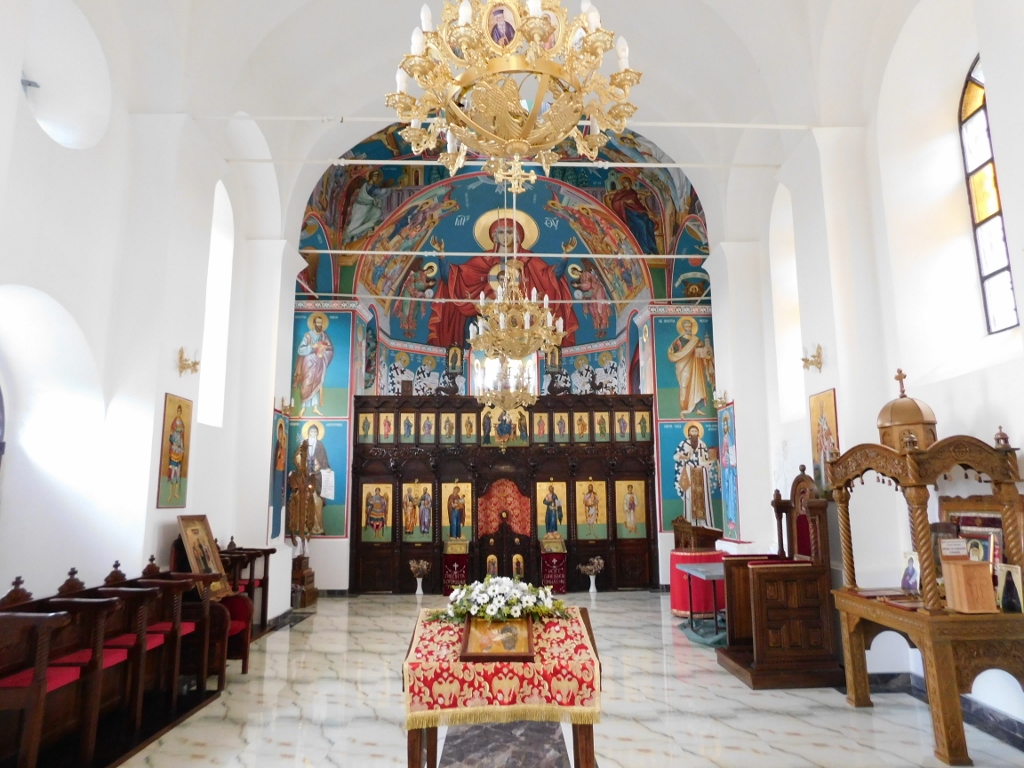 Church of Sts. Peter and Paul in Grošnica, a detail
Church of Sts. Peter and Paul in Grošnica, a detail
 Church of Sts. Peter and Paul in Grošnica, a detail
Church of Sts. Peter and Paul in Grošnica, a detail
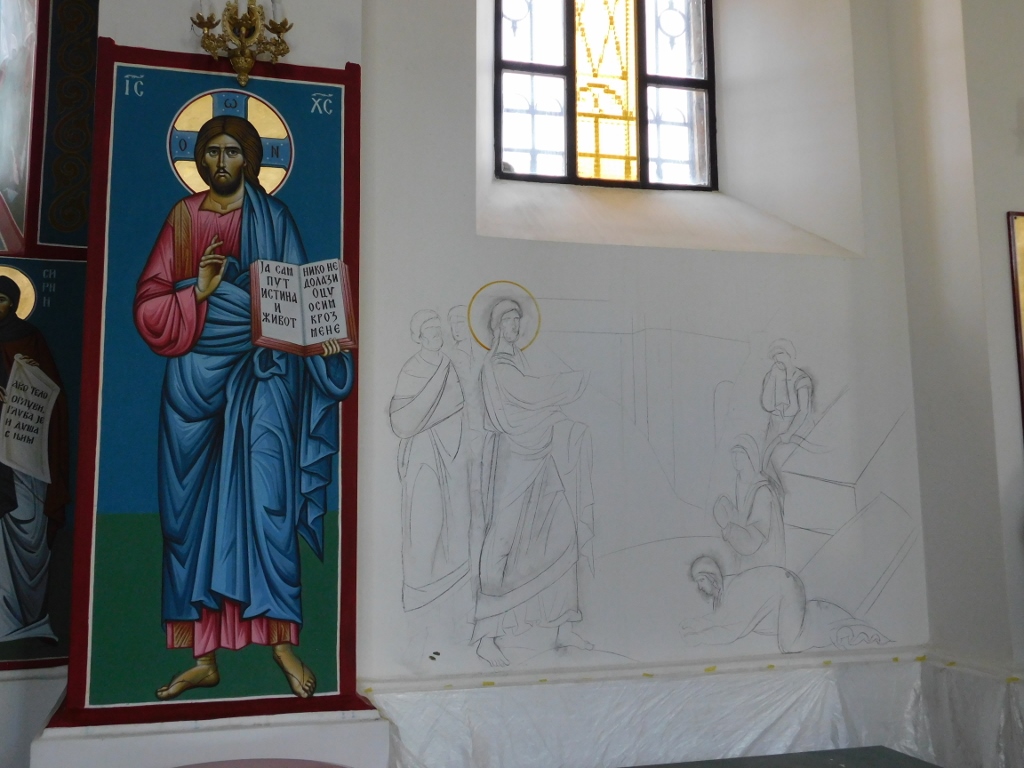 Church of Sts. Peter and Paul in Grošnica, a detail
Church of Sts. Peter and Paul in Grošnica, a detail
Having finished with my visit to the Church of Sts. Peter and Paul in Grošnica, I got back into the car and drove to the centre of Kragujevac, where I stayed for the next few days due to some work. This gave me the opportunity to explore the cultural monuments located in the city itself during my free time.
I’ve created a map that shows all the cultural monuments I visited during this stay in Kragujevac and its surroundings: